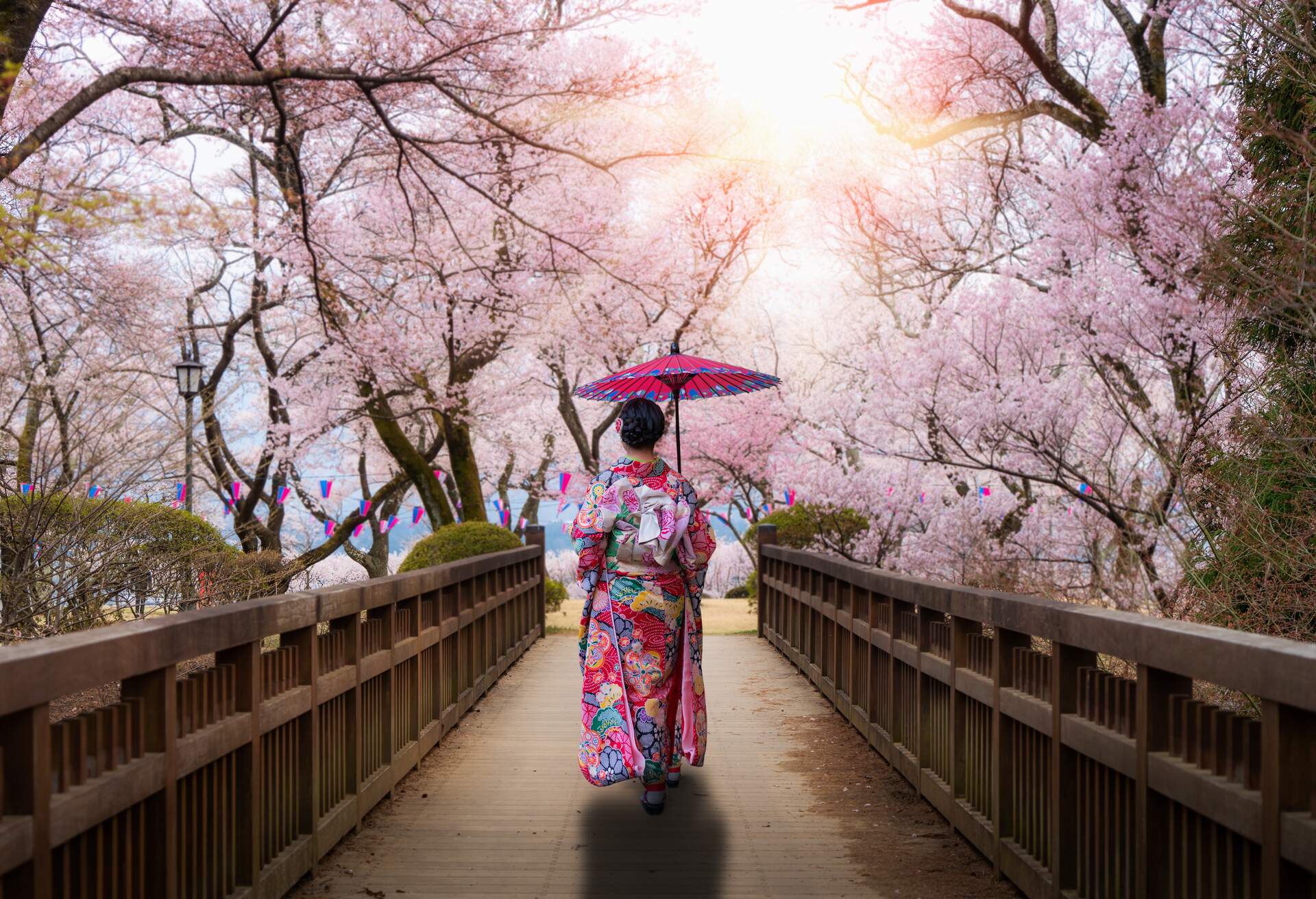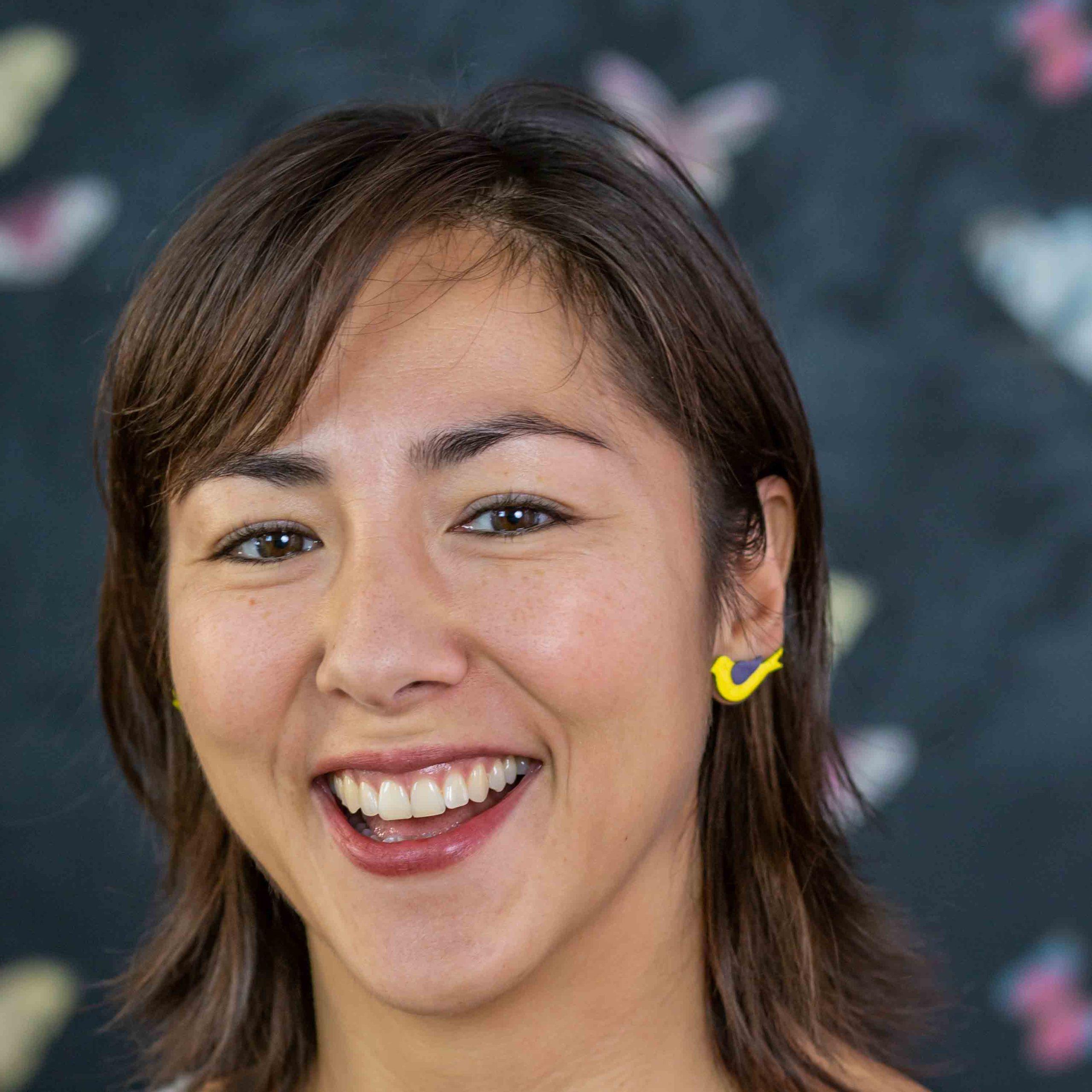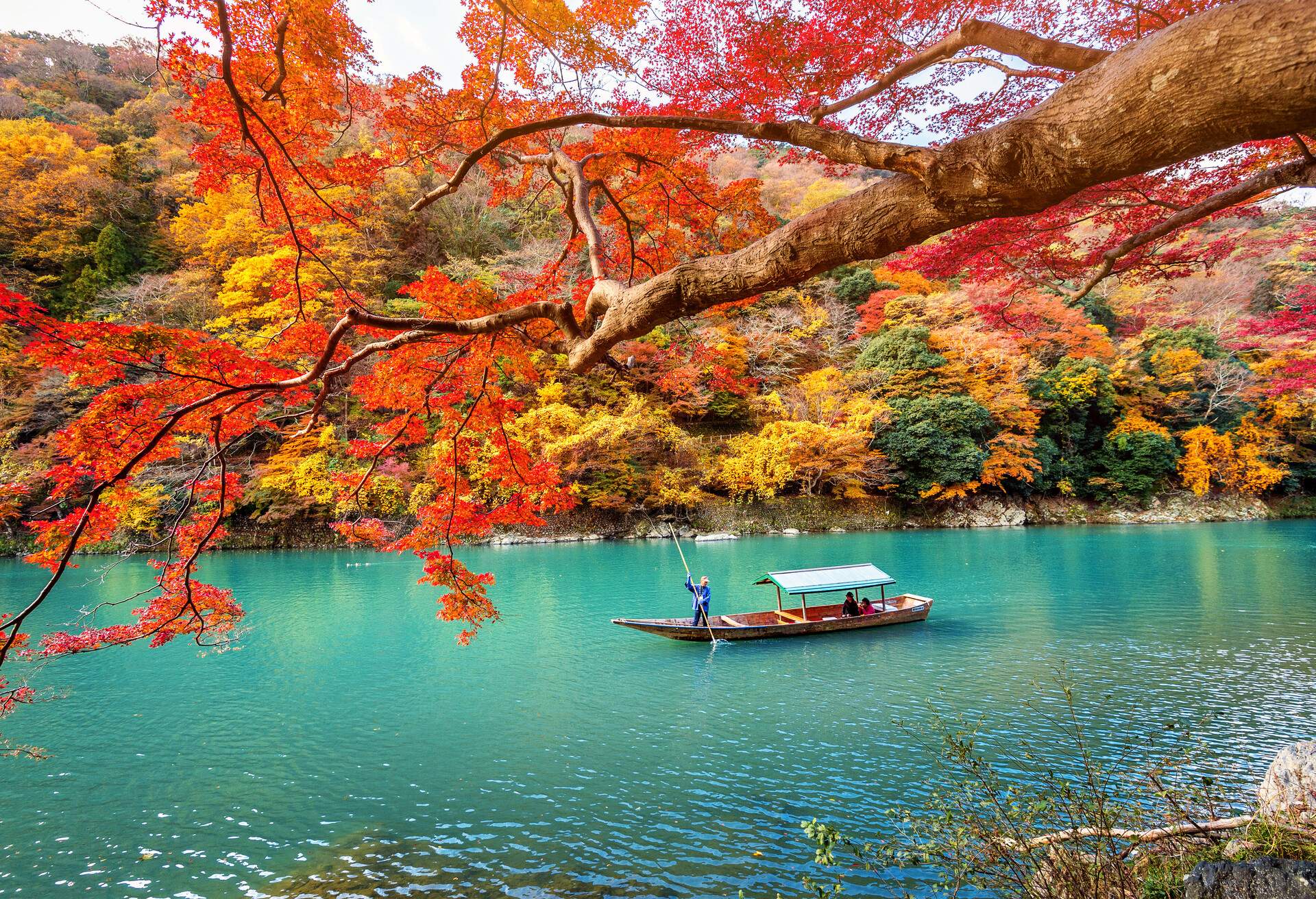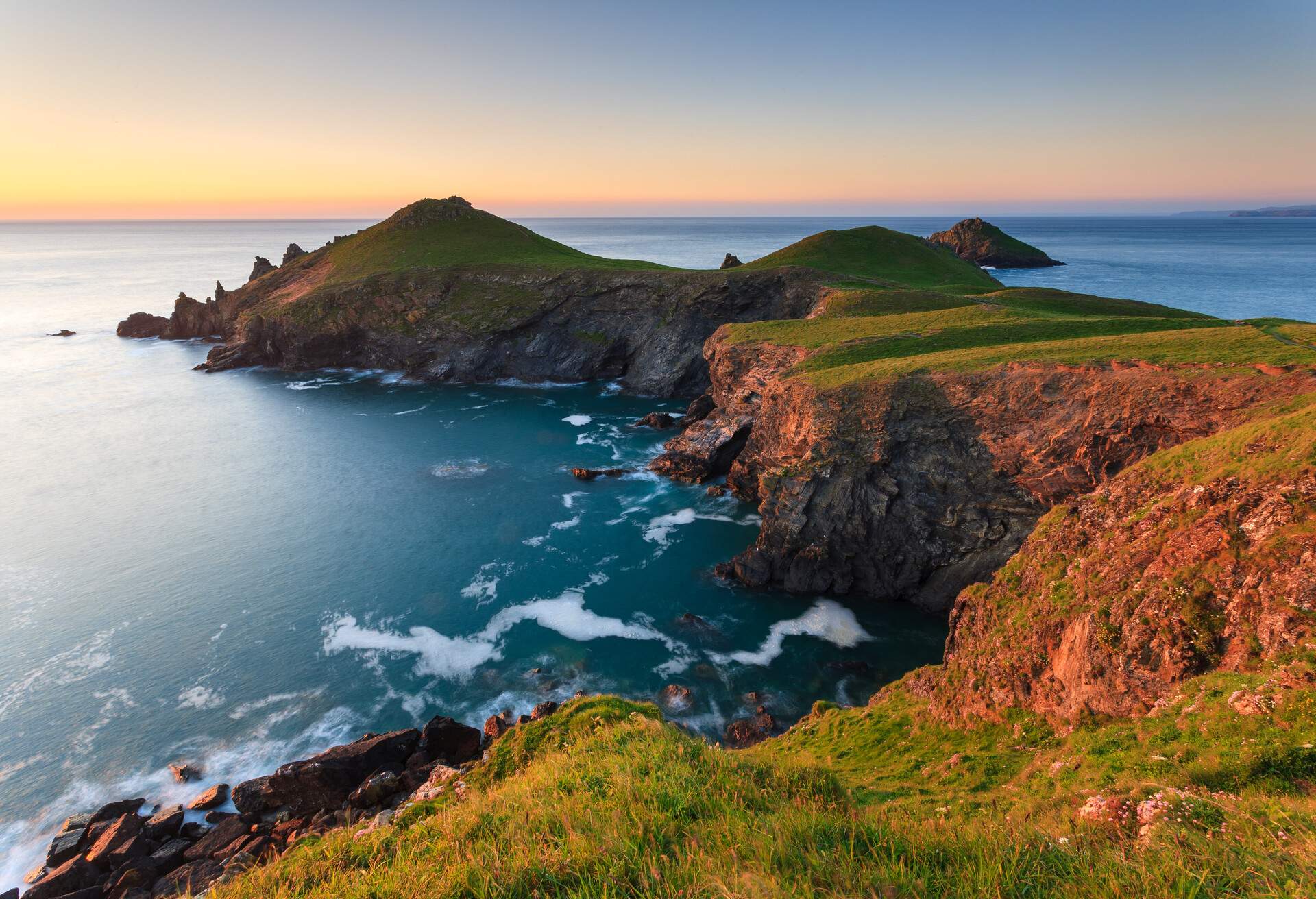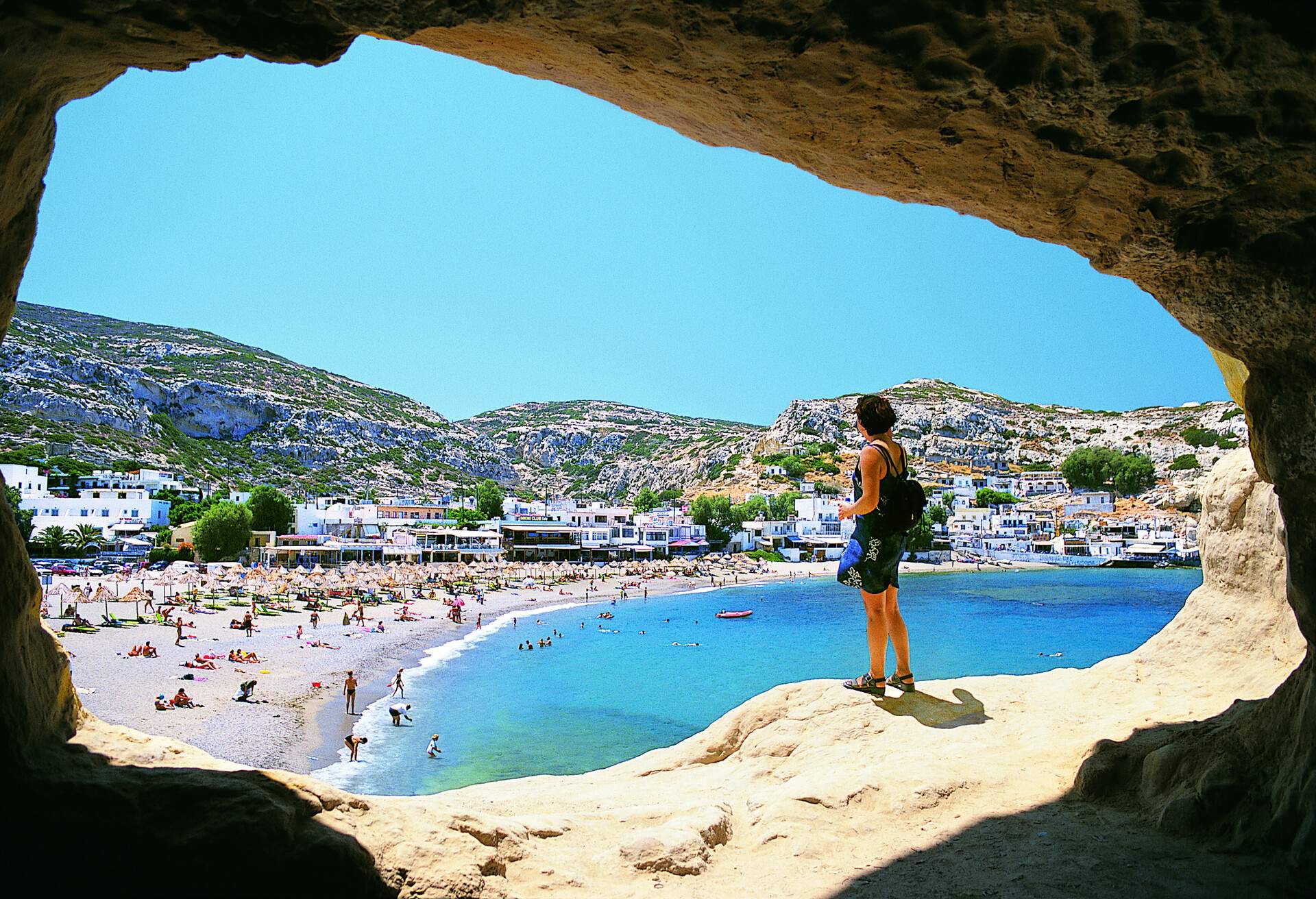A trip to Japan will offer visitors unique experiences you’ll never find anywhere else. Japan seems to have it all, from the fast and furious streets of Tokyo to the holistic ethereal experiences of Kyoto, remote beaches with tropical climates, and fantastic ski resorts.
With its convenient public transportation and diverse regions, guests never run out of places to visit while traveling throughout this country. Add a polite local culture and one of the most efficient transport systems on the planet, and you’ve got yourself a dream holiday.
Ideally, we suggest at least two weeks to get a good taste of Japan. It’s a place definitely to be explored once in a lifetime.
1. Tokyo
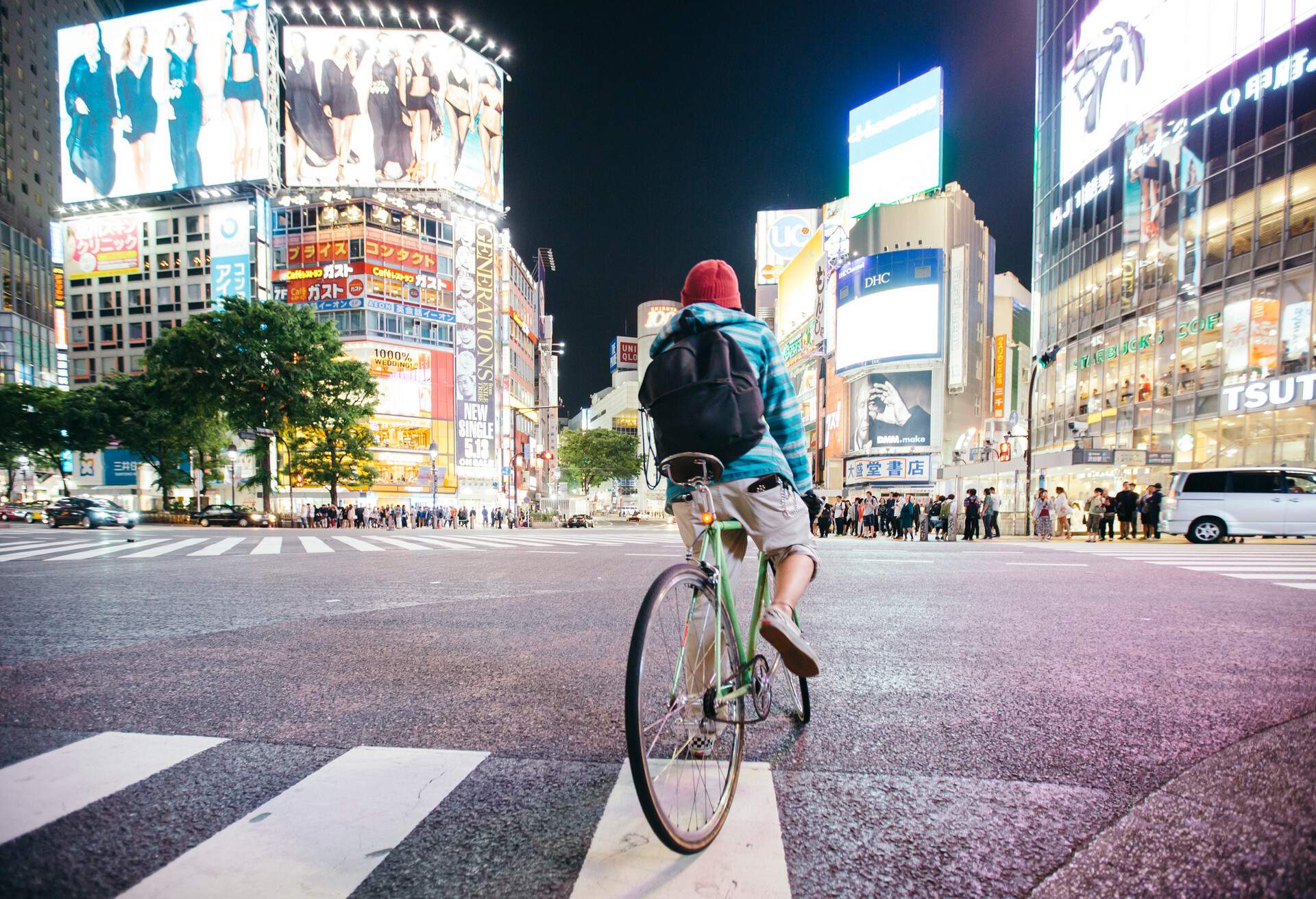
With nearly 10million residents, Tokyo is the largest city in Japan. It’s unlike anywhere else on earth; a huge, busy metropolis with futuristic skyscrapers and a must for first-time visitors to Japan.
This enticing city has its hand on the pulse and is at the forefront of modern technological innovations. It’s the place to go if you’re looking for urban experiences, including contemporary art, shopping, and gastronomy. The city is mesmerising to look at as it quite literally stretches upwards and sideways.
Head to the famous Shibuya Crossing, preferably at dusk when it’s at its busiest and the light is just right, to fully appreciate the effect of the lights and enormous video screens, flashing ads from the skyscrapers towering in every corner, to fully comprehend the pace and magnitude of Tokyo. You can get a bird’s eye view at the Shibuya rooftop observatory.
Where to stay: Ueno is a relaxed, affordable and friendly district of the city to stay, and near lots of major attractions.
When to go: During October and November the city is awash in colour and shrines tend to stage beautiful autumn festivals. The weather is lovely as well, and much more pleasant than summer when the humidity soars and public transportation can be hard to bear. Spring (March to May) is almost as appealing, not least because of the stunning pink cherry blossom.
What to eat: Tokyo is the birthplace of sushi so there is no place better in the world to eat it!
1a. Tokyo Skytree – Tokyo
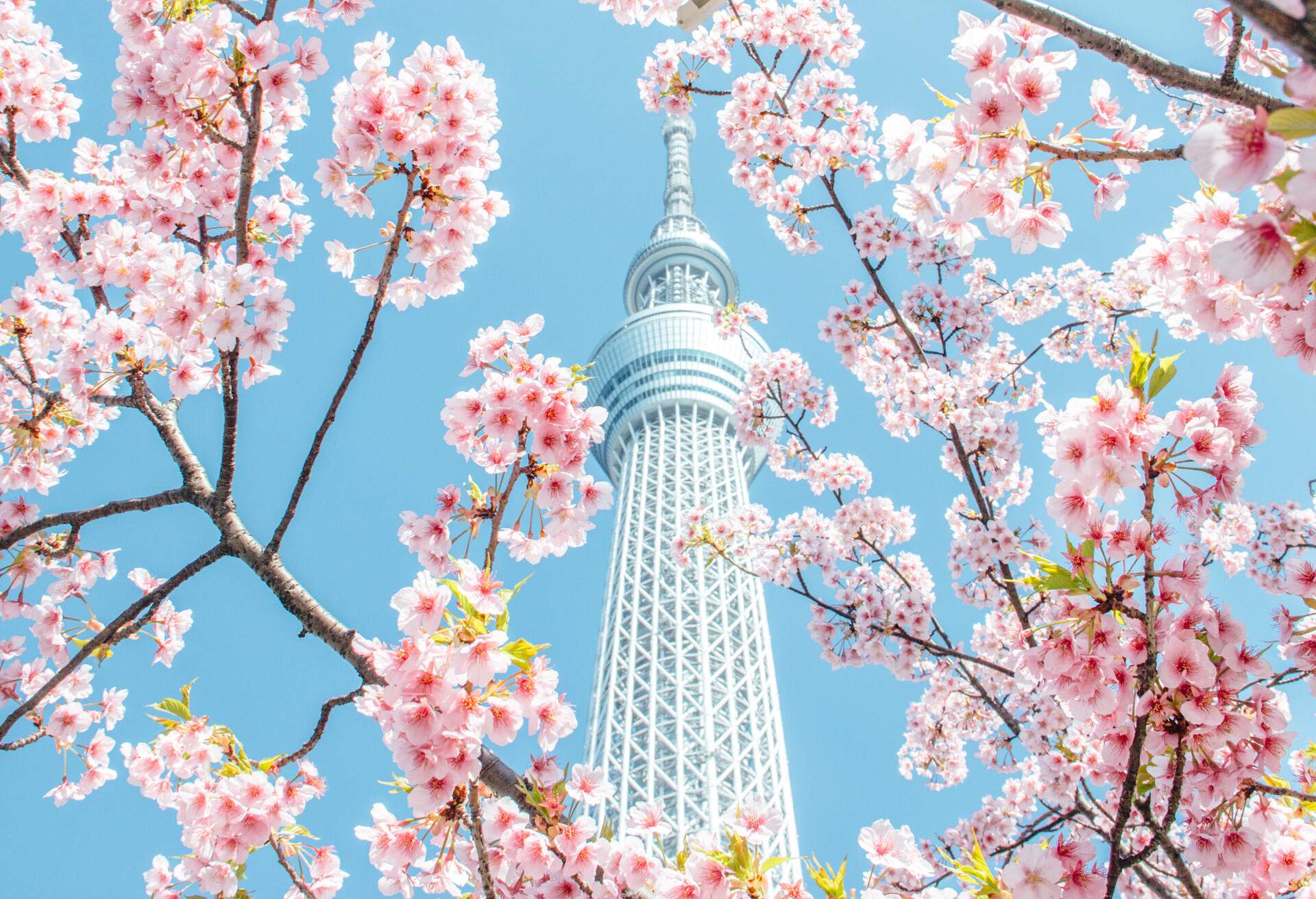
Talking of views, they don’t come better than those at the Tokyo Skytree in Eastern Tokyo, the tallest tower in the world. A whiz to the observation deck at the top, at 2,080 feet, offers jaw-dropping 360 panoramic views of this gigantic metropolis and its skyscraper-filled skyline.
1b. The Imperial Palace
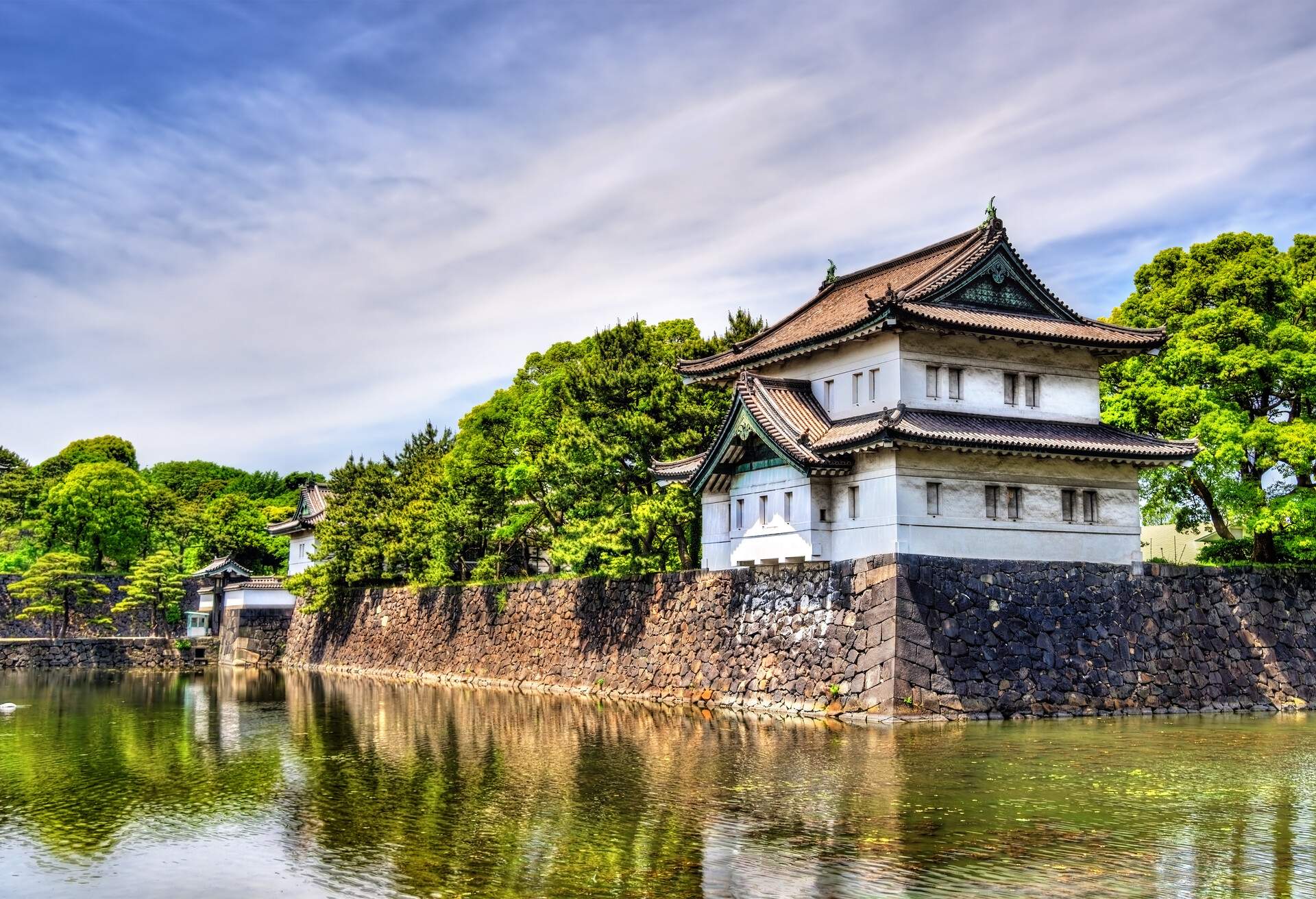
Like England has Buckingham Palace, Japan has the Imperial Palace, the royal family’s official residence in a large garden in the centre of Tokyo. The inner grounds of the garden are rarely open to the public, but the East Gardens are open all year round and are a fascinating place to walk. The inner grounds open on two occasions in the year, the 2nd of January for the New Year greetings and on the 23rd of February for the Emperor’s birthday. Time your visit with these dates for a chance to experience the inner gardens.
2. Tsumagoi – Gunma
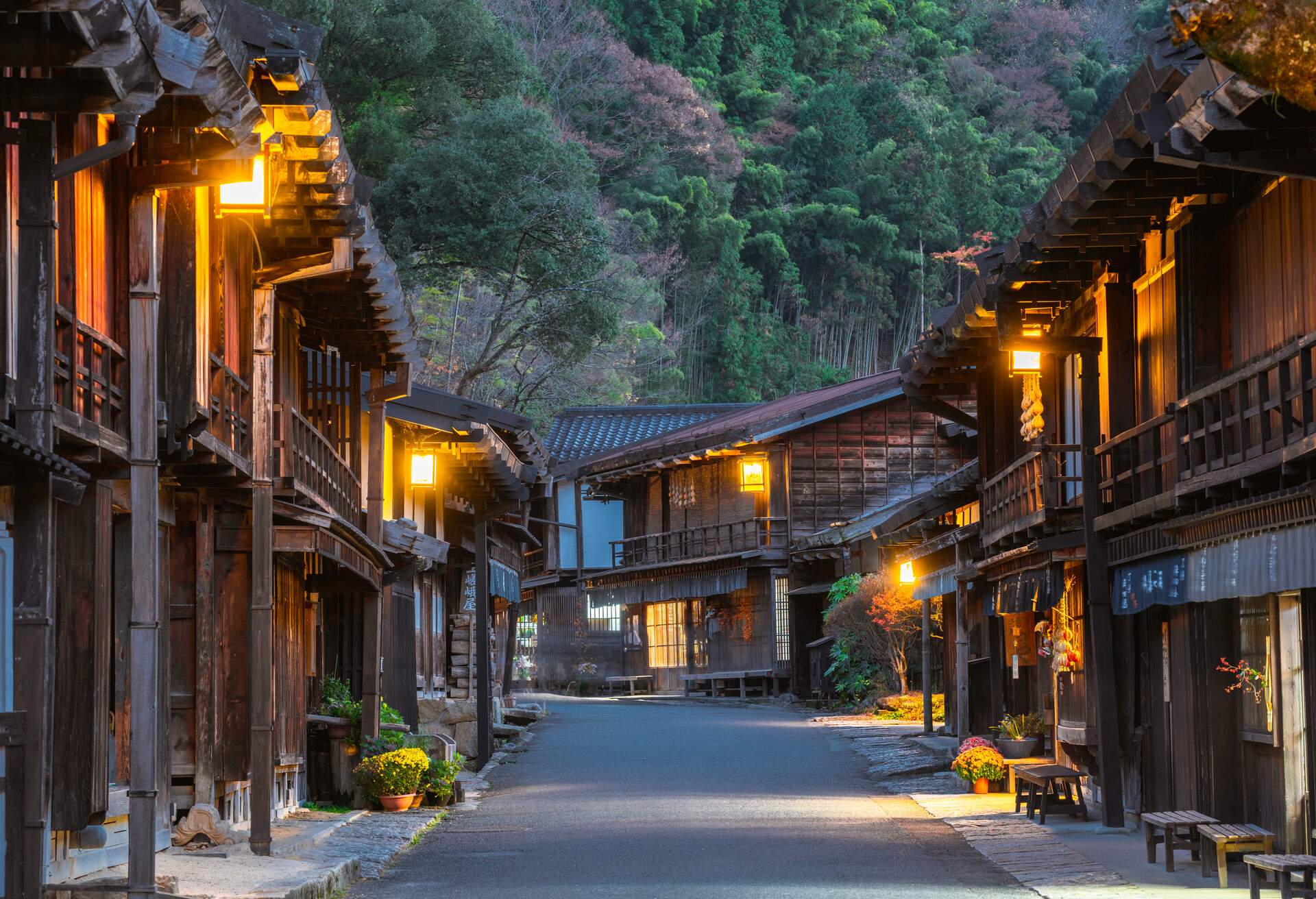
Step back in time at the village of Tsumagoi, in Kiso valley in Gunma Prefecture district, once a popular stop for travellers between Tokyo and Kyoto. They have beautifully restored the town’s old wooden Inns, and you can find a hiking trail that leads to the village of Magome, part of the original route. It has stunning views, but you need to catch it in the right season; otherwise, it’s impossible to walk there.
Where to stay: The Tsumagoi Prince hotel comes recommended and nearby the Joshin’etsu-kogen National Park.
When to go: June – August for the best temperatures but if it’s snow you’re after come in December or January as there are lots of fantastic ski resorts.
What to eat: Cabbage! Tsumagoi is the largest producer of the leafy, green vegetable in Japan.
3. Hakone – West Kanagawa
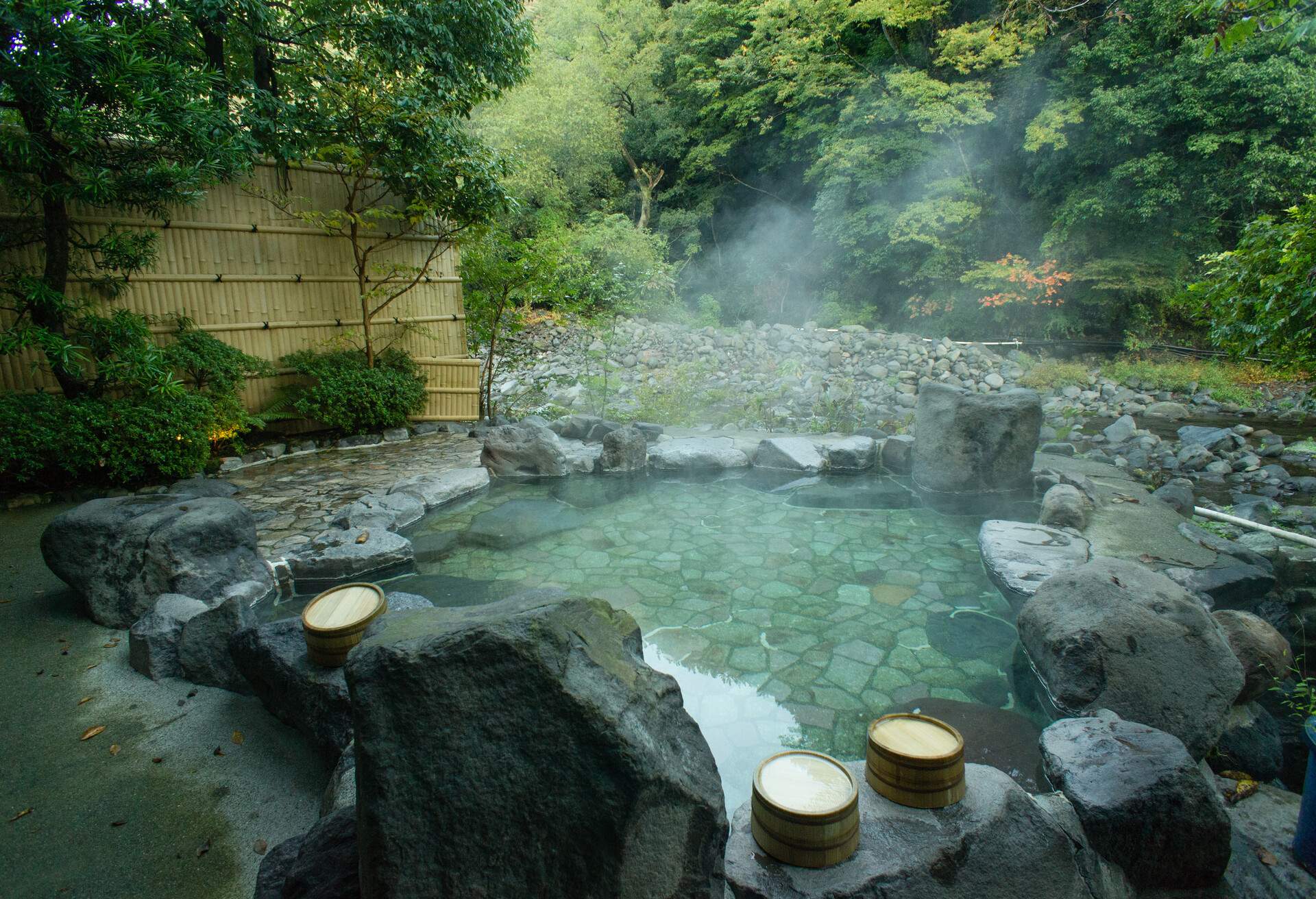
About an hour’s drive from Tokyo will bring you to Hakone, part of the Fuji-Hakone-Izu National Park on lake Ashinoko, famous for its hot springs. It’s also where you can catch a glimpse of Mount Fuji on a good day across the lake or from a cable car. With so many hot springs, the obvious thing to do is indulge in that ancient Japanese ritual of shared open-air bathing, called the “onsen”.
Of course, you’ll also find some hot springs with incredible views. Why not try a black egg to add a gastronomic element to the experience? It’s an egg boiled in sulphuric acid waters at one of the many hot springs.
Where to stay: Guro Kansiro is a 15 minute walk from Hakone Gora Park and its array of hot springs.
When to go: Autumn evenings are the perfect time to relax in the hot springs.
What to eat: A black egg! They are regular chicken eggs that have turned black due to be cooked in the black springs. You can purchase them in tourist areas. Local folklore suggests eating one egg will add seven years to your life!
4. Osaka
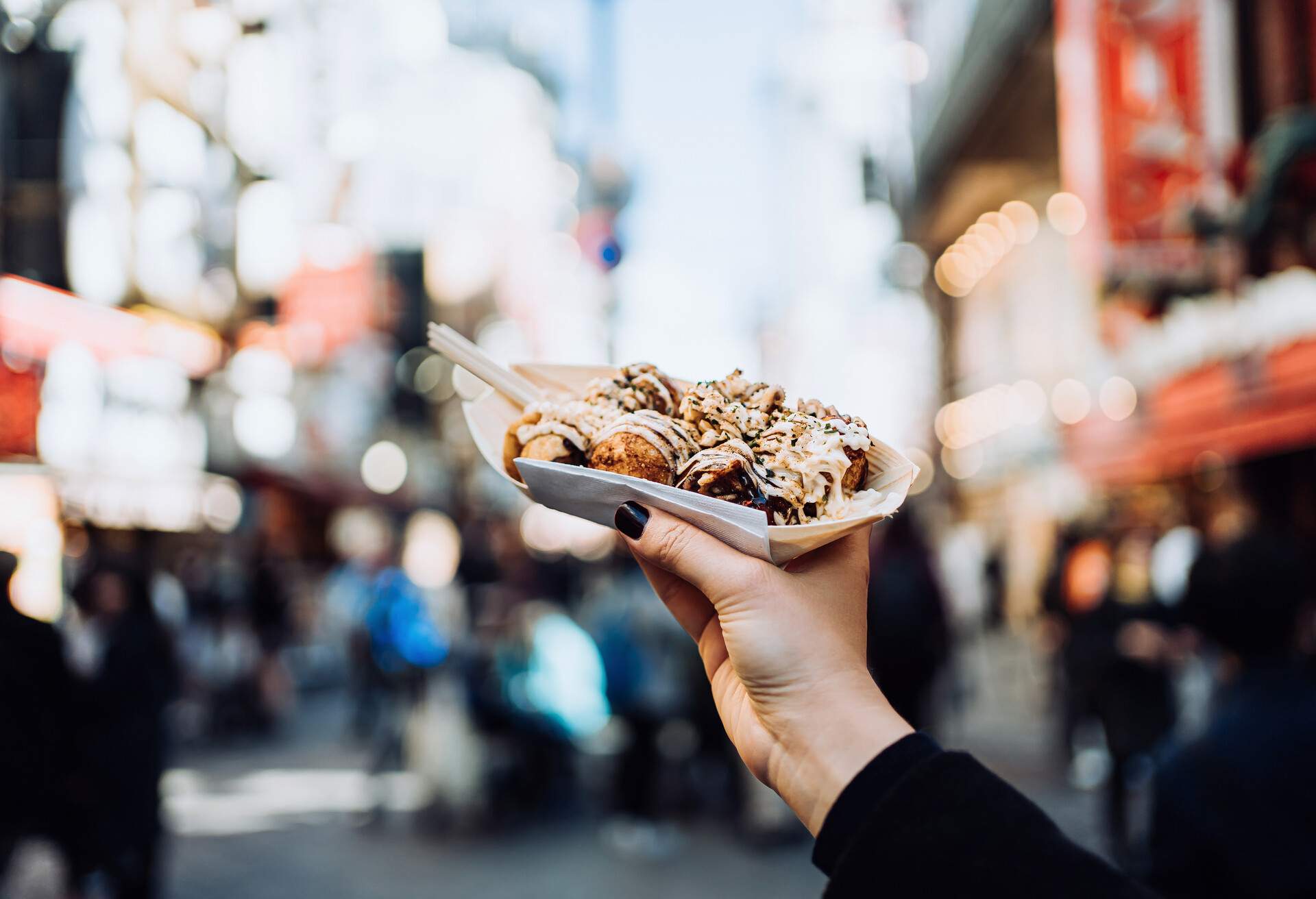
Osaka, Japan’s third largest city and also a major port, is often referred to as Japan’s kitchen and has got to be at the top of any foodie’s tour of Japan.
Its street food market is epic, to say the least, and thought to be one of the best in the world. If you head to Dotonbori, in the city centre, lined with eateries of any description and whose unofficial slogan is ‘eat until you drop’, you will be spoilt for choice.
A must-try is Kukury, famous all over Japan, but this is its original home. Another must-taste, Osaka’s signature dish, has got to be Takoyaki, which is grilled octopus dumplings. There’s a different pace to Osaka, intensified by its frenzied display of LED lights, animated 3D signage and flashing video screens, all part of the experience.
Osaka also has its own castle, the Osaka Castle dating back to 1583. The castle is totally worth exploring, along with the oldest of all the Sumiyoshi shrines, the Sumiyashi-Taisha.
Where to stay: If you enjoy food and a lively nightlife we recommend the Namba district.
When to go: The spring or autumn to experience the city in the most enjoyable temperatures.
What to eat: Takoyaki, which are grilled octopus dumplings.
5. Kyoto mountains
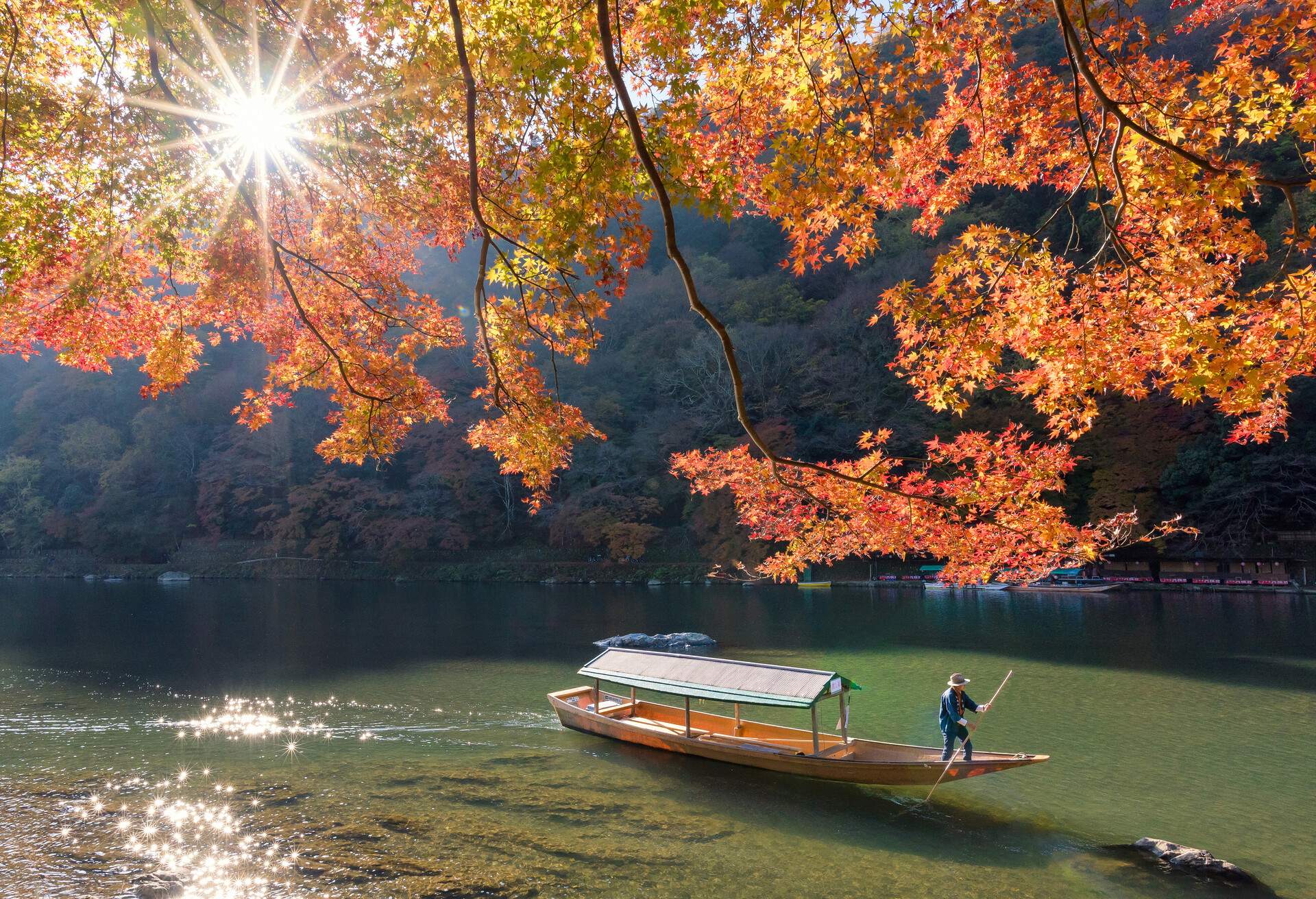
Kyoto is, without a doubt, the image you had in mind when you set out on your trip to Japan. It is simply the most beautiful place in Japan.
It’s here where you’ll find wooden teahouses and Geishas in brightly coloured kimonos, Zen gardens and temples; it’s thought there are over a thousand here. The city itself can be rather disappointing after the buzz of Tokyo or Osaka, but if you head out towards the mountains, you will get a truly authentic Japanese experience. If you’ve ever wanted to see a proper cherry blossom in its full glory, aim to be here in late March or early April for that magical experience.
Where to stay: Try a traditional inn – a ryokan – for a unique Japanese experience for one night before moving to a cheaper hotel or hostel downtown. A ryokan is quite pricey but it includes meals and is very authentic.
When to go: Late March/early April for the most amazing colours and photograph opportunities.
What to eat: Kyoto is famous for traditional dishes including the Kyoto Fire Ramen which is cooked right in front of you. Tofu is also synonymous with Kyoto cuisine.
5a. Kinkaku-ji Temple – Kyoto
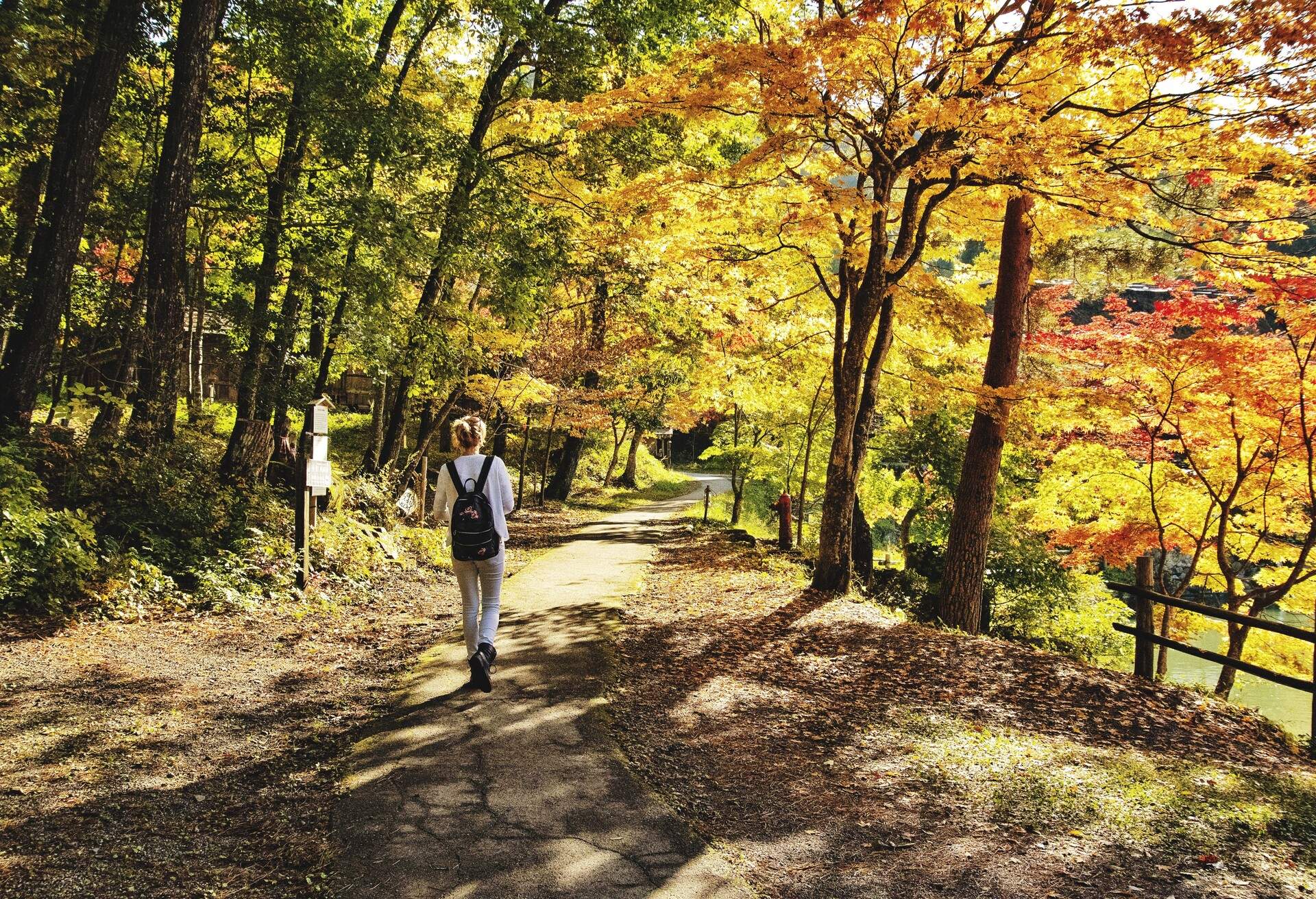
Nothing epitomises Japan more than the Kinkaku-ji Temple at the foothills of Kinugasa Hill. The temple is in the true Japanese architectural style, with the two top floors completely covered in gold and a bronze phoenix perched at the very top. You’ll find statues of Buddha and other Buddhist icons inside. The temple grounds are wooded and can provide a beautiful space for meditation. They are incredibly stunning in the autumn when the trees start to change colour and in winter when snow blankets them. Of course, in such a revered place, one of the most fun things to do is get your fortune told by a vending machine.
6. Nikko – Tochigi
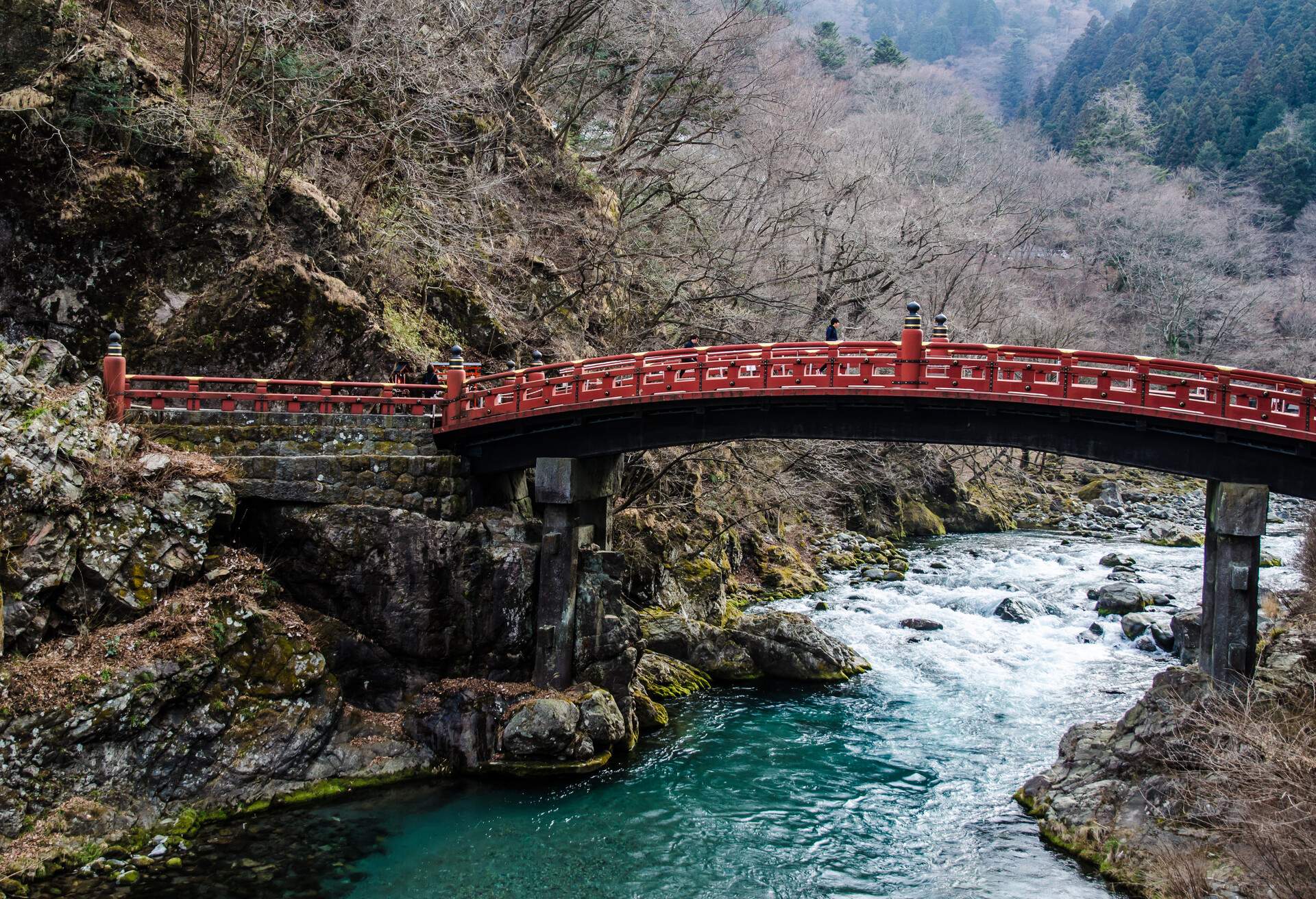
If it’s temples you are after, and there are many in Japan, then head to Nikko, a calming retreats a few hours’ drive north from Tokyo. The Shinkyo Bridge (Sacred Bridge), one of the three finest bridges in Japan, will lead you into the mountains dotted with various temples and shrines, notable amongst them the Toshogo Shrine. It’s awe-inspiring, to say the least, and up there with the top must-see places in Japan. It’s a memorial of the founder of a dynasty that ruled Japan for over 250 years. There’s a colourful complex of over a dozen red and black buildings lavishly decorated with wood carvings covering almost every inch, covered in copious amounts of gold leaf.
Where to stay: Try the Nikko Guesthouse, which is one mile from Shinkyo and Rinno-ji Temple.
When to go: As with any of the mountainous regions, it is best to visit during the Sakura spring season or during the Autumn Foliage period.
What to eat: Soba (buckwheat noodles) and Yuba (tofu skin).
7. Kanazawa – the capital of the Ishikawa district
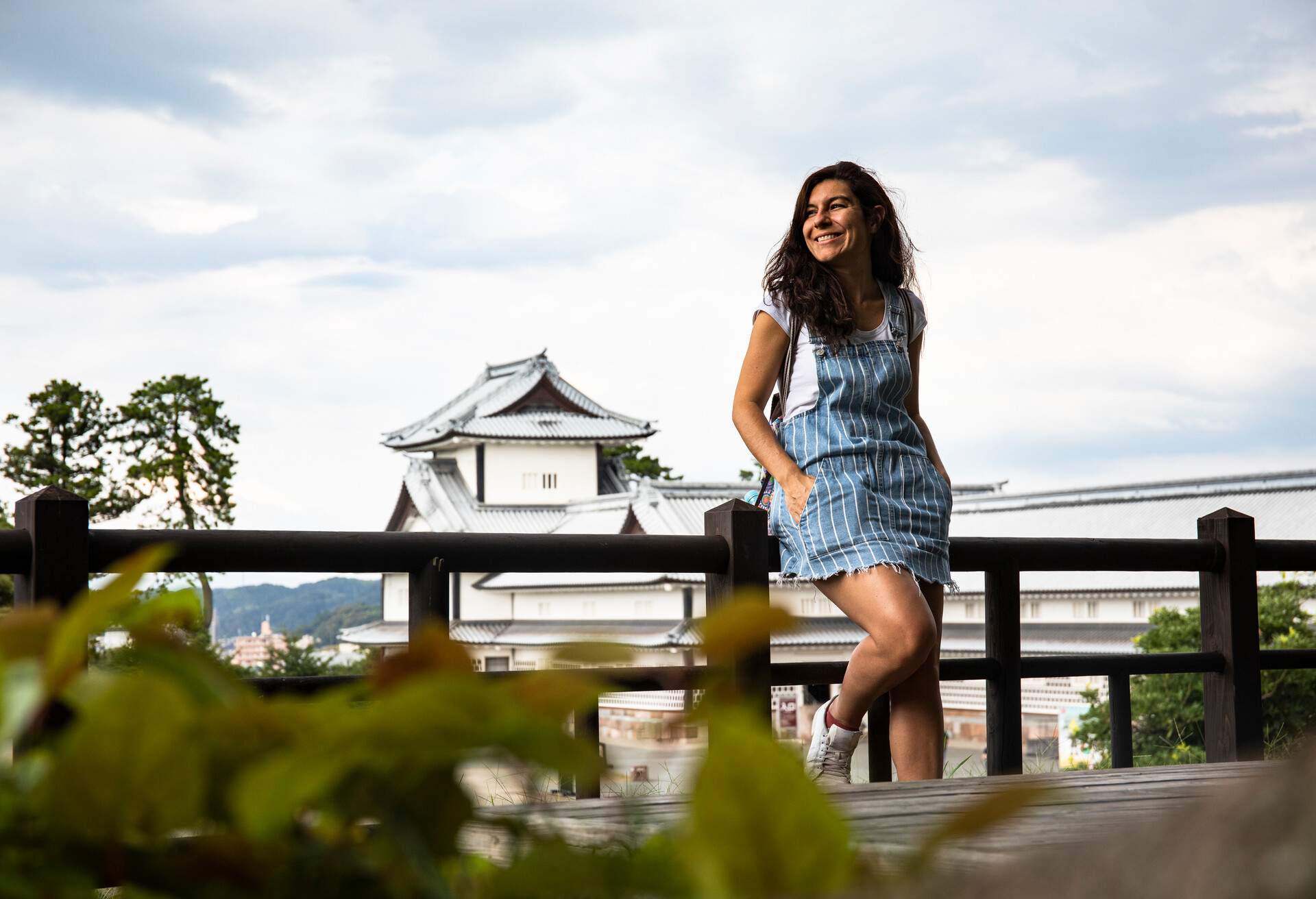
Not many visitors make it to Kanazawa, but it has to be one of the top places to visit in Japan. For a true Geisha experience, head to the Geisha districts of Higashi Chaya or the slightly quieter Kazeuemach and Nishi Chaya, where you will find preserved wooden buildings. You will find one of Japan’s best gardens, the Kenroku-en Garden, with many art museums here. Don’t miss the castle while you’re there. One of the best experiences here is having a proper Tea Ceremony at the oldest Tea houses in Kanazawa at the Gyokusen-en Gardens.
Where to stay: Hotel MyStays Premier Kanazawa is within a short walk of nearby attractions, such as Ishikawa Ongakudo concert hall if you fancy some more culture.
When to go: Anytime, except the summer when it can be very hot and humid.
What to eat: The melt-proof ice-cream! The locals consume more ice-cream here than any other place in Japan.
8. Takayama – Gifu
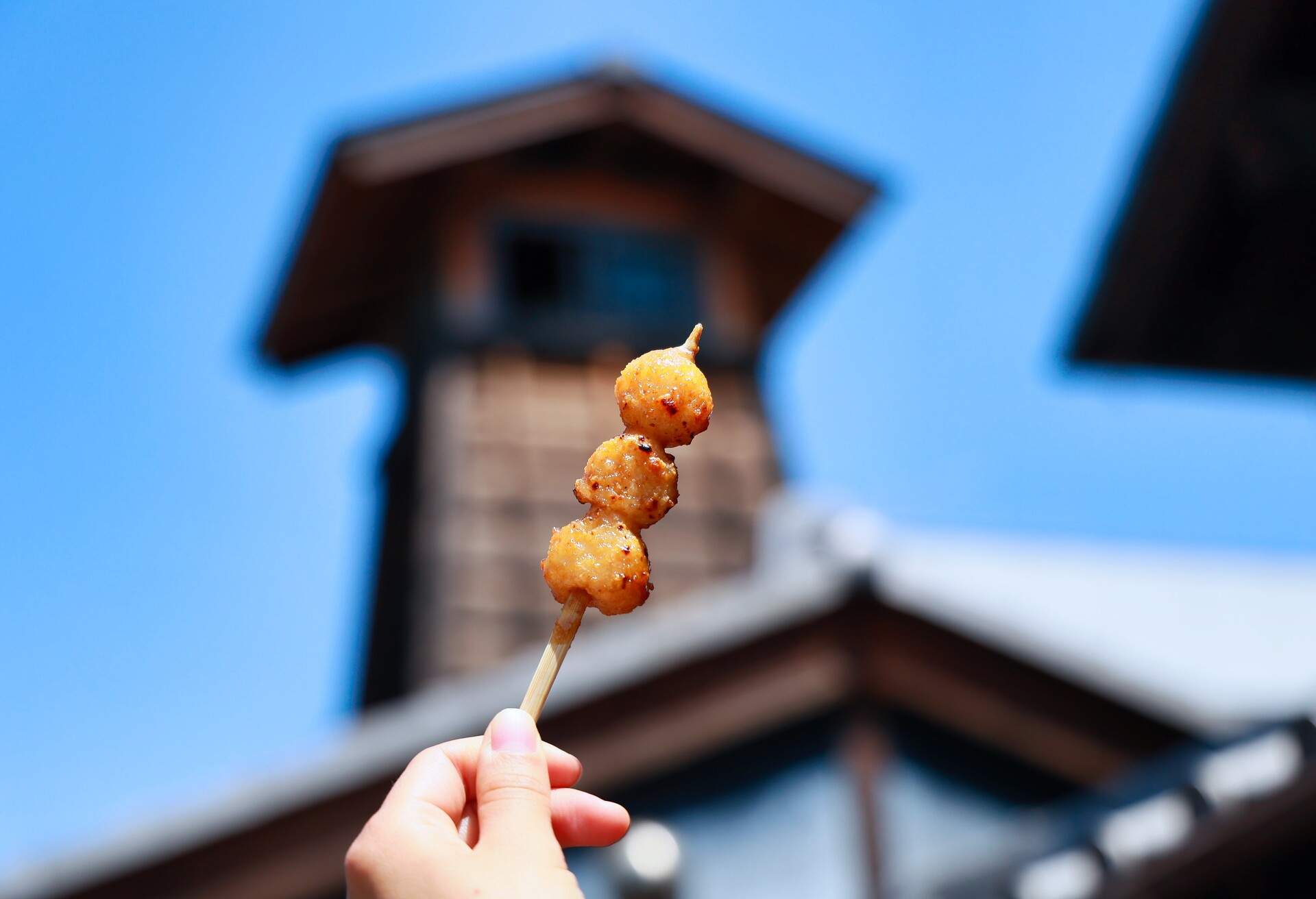
Though the least visited, Takayama, at the foot of the Japan Alps, is one of the best places to visit in Japan. Get up early, before the crowds arrive, and grab some “mitarashi-dango”, rice balls grilled in soy, and take in the magic and charm of the old town. The streets are lined with perfectly manicured trees, traditional wooden houses, and red bridges over a river. It’s also a good place for the Cherry blossom season.
Where to stay: The historic Sanmachi-suji district, with its narrow streets to get a glimpse into life pre-modern Japan.
When to go: October for sun and pleasant temperatures or the spring for the cherry blossom season.
What to eat: The delicious mitarashi-dango (rice balls grilled in soy).
8a. Hida Folk Village – Gifu
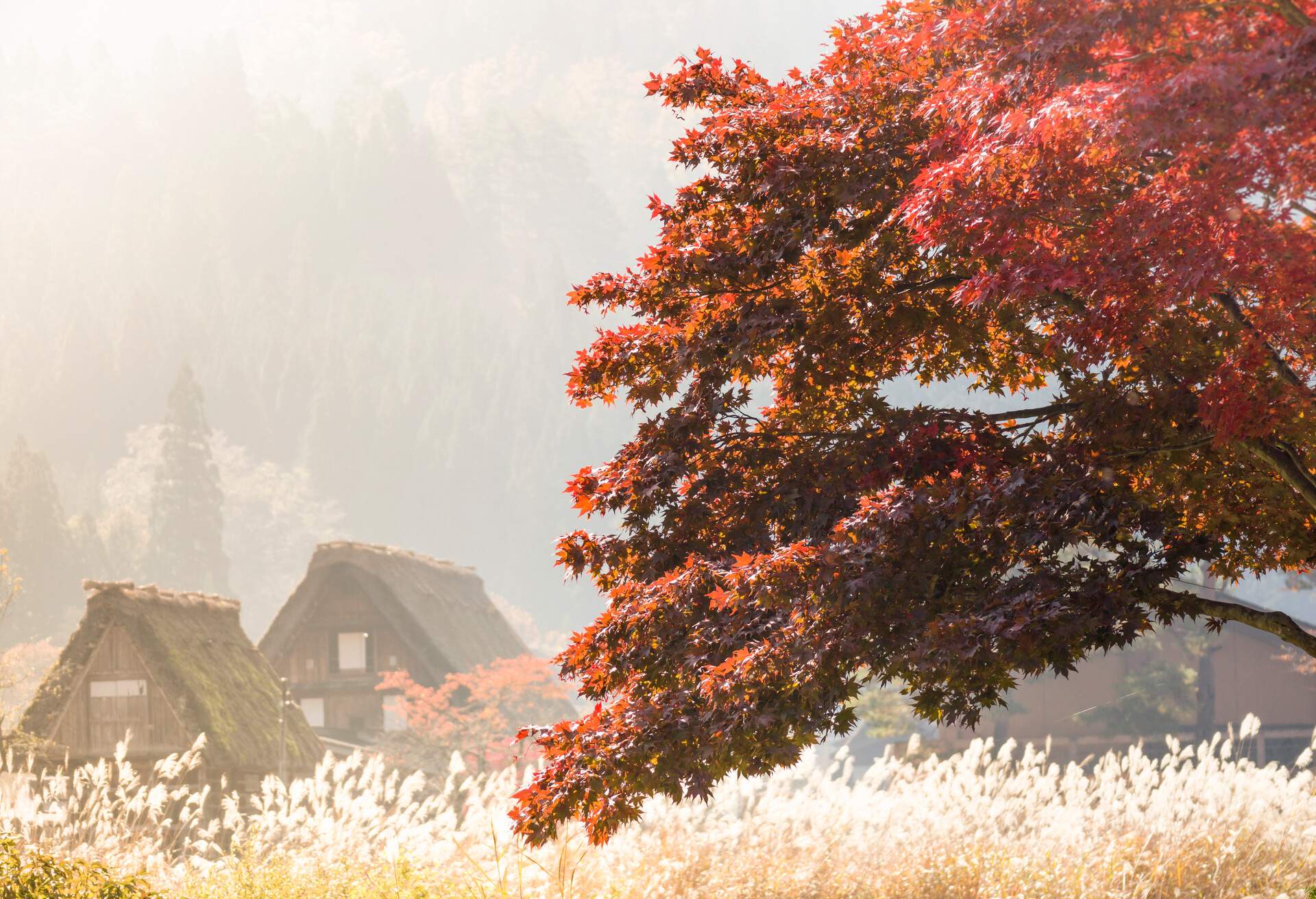
The Hida Folk Village is an open-air village museum with houses relocated from their original locations in nearby Shirakawago. It’s a World Heritage Site and exhibits tools used in everyday life as it was then.
9. Kamikochi – Gifu
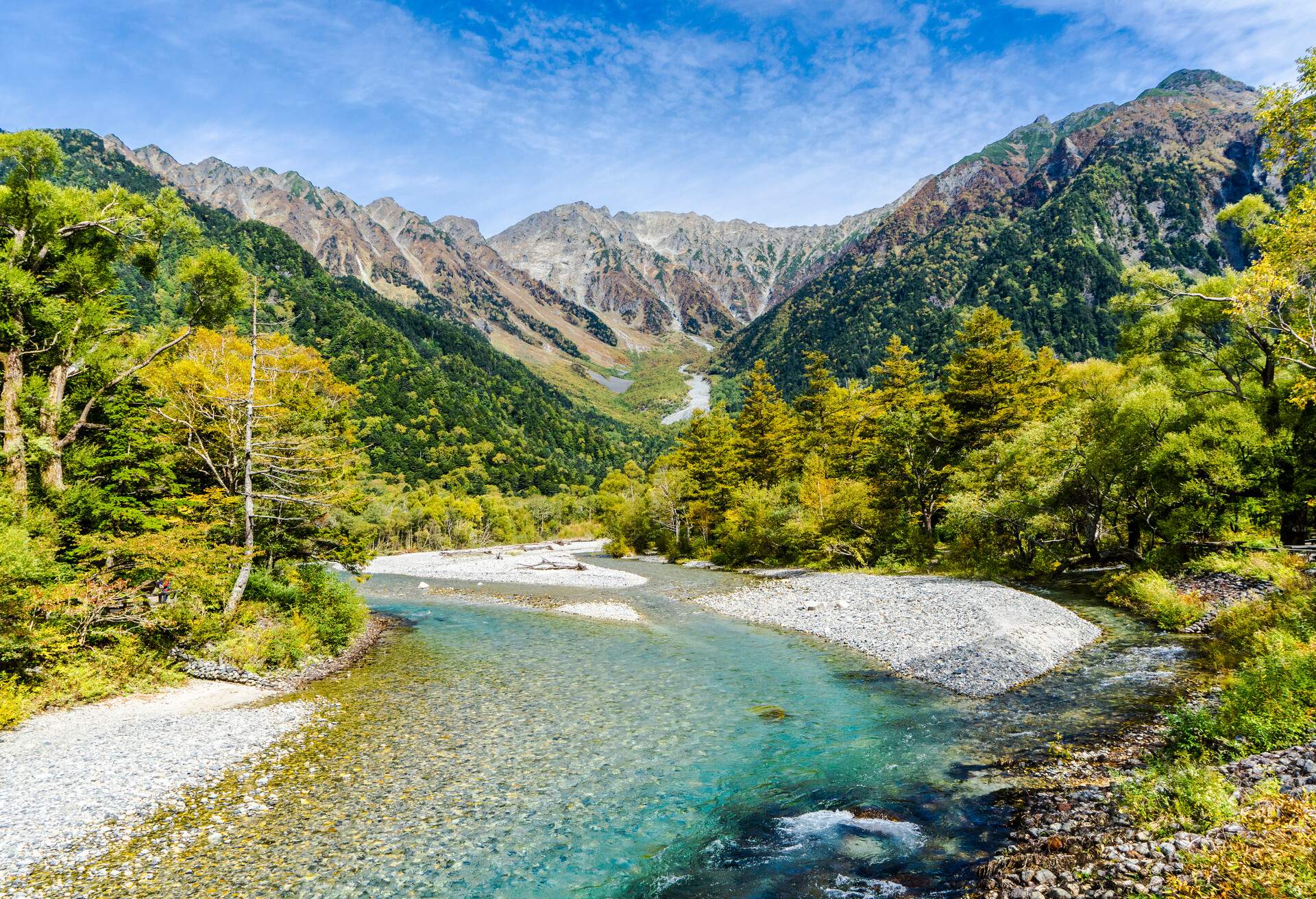
If you are an avid trekker, then Kamikochi is the place for you. It’s by the Japan Alps, on the Northern Japan Alps to be precise, where you will find the Kamikochi River, a highland river valley surrounded by soaring peaks and perhaps the most stunning natural vistas in Japan. Moreover, Kamikochi is the gateway to the region’s tallest mountains and most taxing hiking trails, such as the Yari–ga-take.
Where to stay: In the Kamikochi valley, with most accommodation lying along the Azusa River.
When to go: From April to November. There is heavy snow in the winter and the resort is closed.
What to eat: Salt-grilled trout grilled on a charcoal fire.
10. Mount Koya – Wakayama
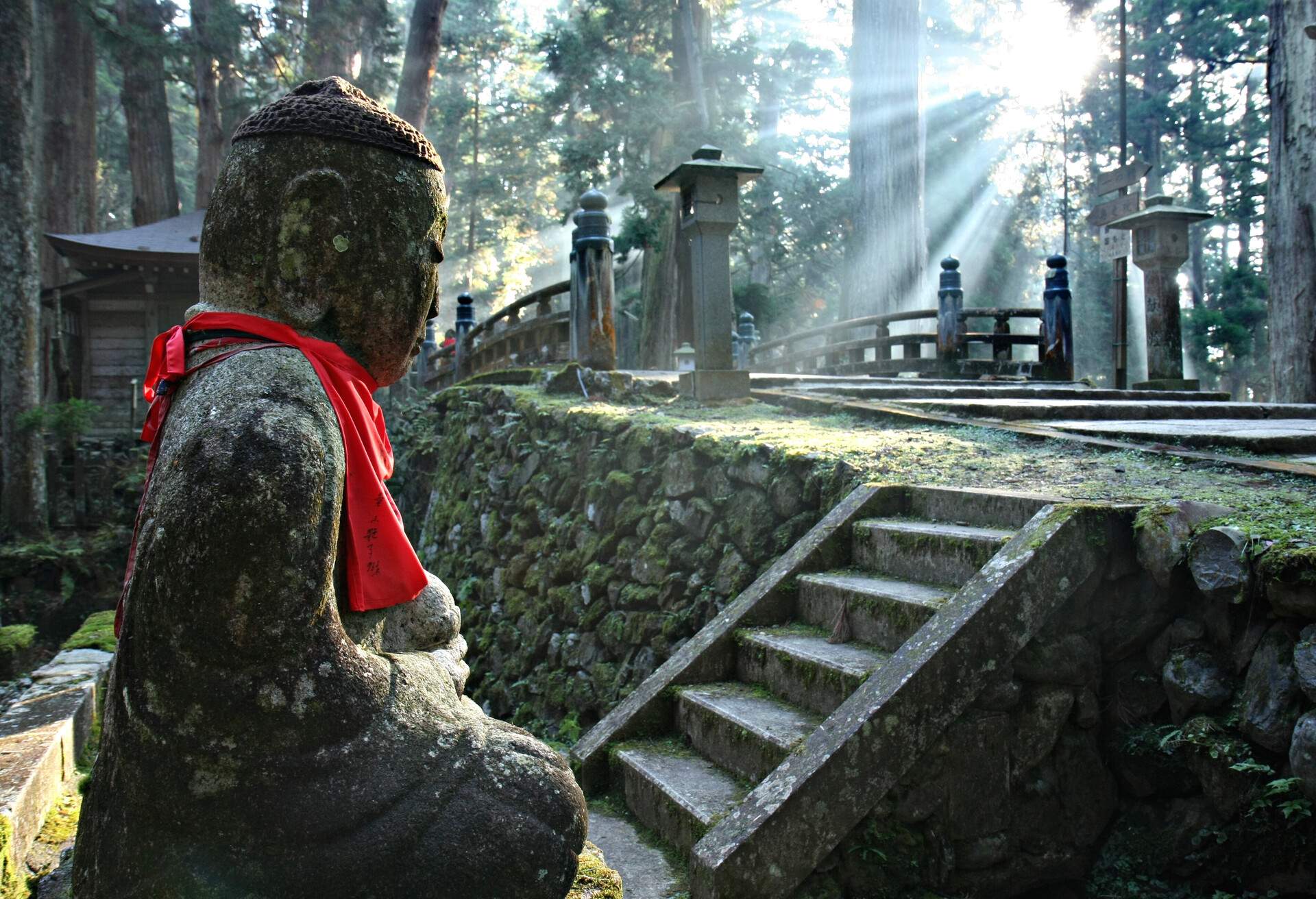
Mount Koya or Koya-San provides one of the most genuinely spiritual experiences you will get in Japan, or perhaps anywhere else on earth. Your journey starts with a cable car that takes you up into the secluded and sacred temple town, home to some Buddhist monks found up in the mountains. One can’t help but feel transported into a different world.
If you can, stay here for the night for a fully immersive experience that includes an early morning rise for meditation with monks.
An onsen bath is all part of the experience whilst your accommodation will come in the form of a tatami room, complete with sliding doors and where you sleep for the night on a mat. Finally, take a tour of the temples. There are over 100 of them, including the Okunoin forest cemetery, the final resting place of the nation’s most important historical and religious figures.
Where to stay: Try and stay at a temple in the mountains for a unique experience.
When to go: Spring/summer.
What to eat: Mochi (Japanese rice cakes).
11. Hiroshima
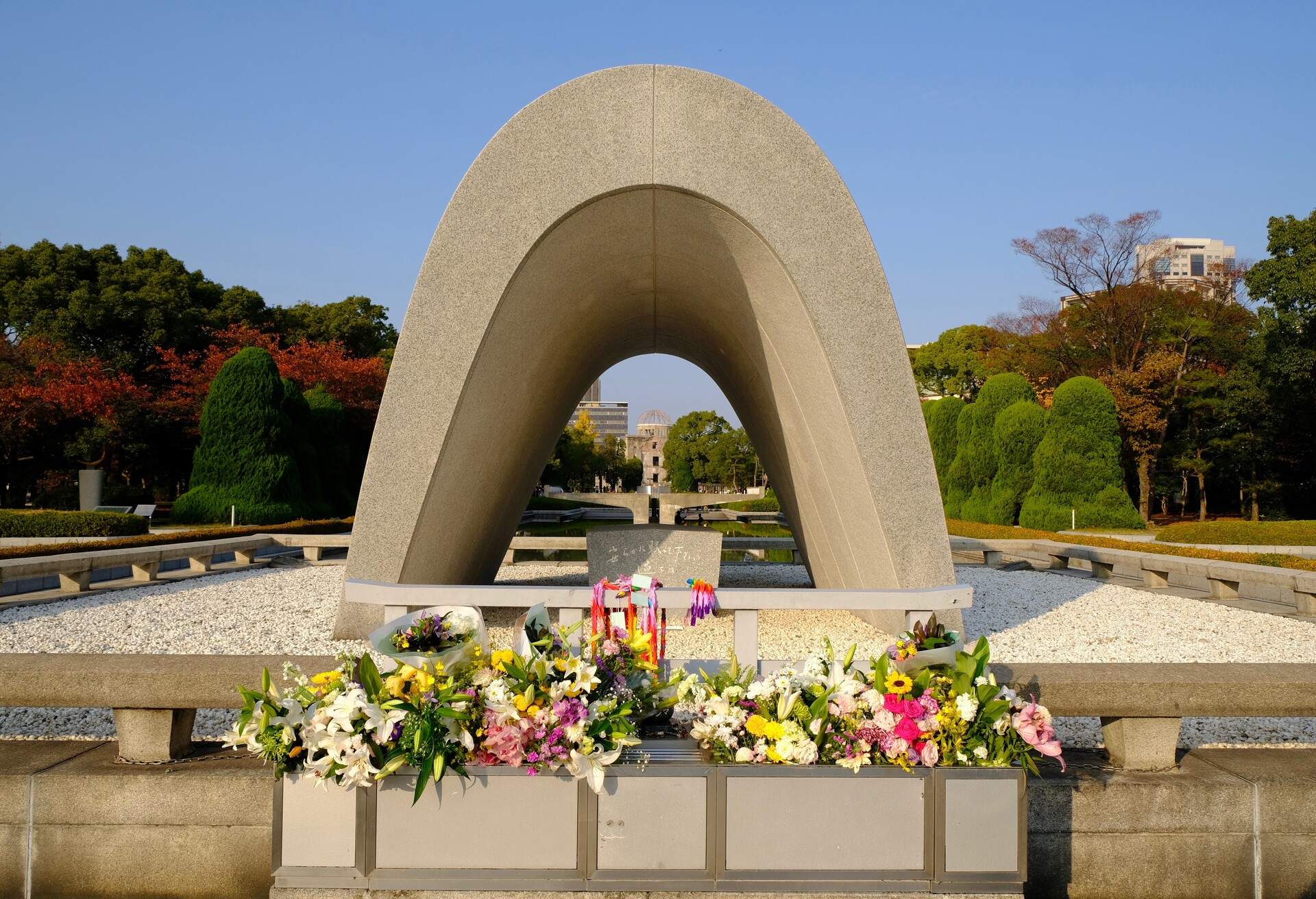
Re-built entirely after the WWII bombing, Hiroshima has got to be on your list of where to go in Japan, if not just to pay respect to the victims of the devastating atomic bombing. The Peace Memorial Museum and its surroundings provide a peaceful if not poignant space for reflection and a chance to take a step back for a slightly slower pace of things in Japan.
Combine your visit with a trip to Miyajima Island, only an hour away, famous for the Torri Gates, which seem to float when the tide is high; the sight is ranked as one of Japan’s three best views. Spend the night at Miyajima to fully appreciate its romantic setting when the paths have emptied of day visitors and are replaced with deer settling in for the night.
Where to stay: Miyajima island.
When to go: May-May for cherry blossom season.
What to eat: Okonomiyaki, a local delicacy which translated means ‘what you like’, typically made of batter, cabbage, pork, and optional items such as squid, octopus, and cheese.
12. Mount Fuji – Yamanashi and Shizioka
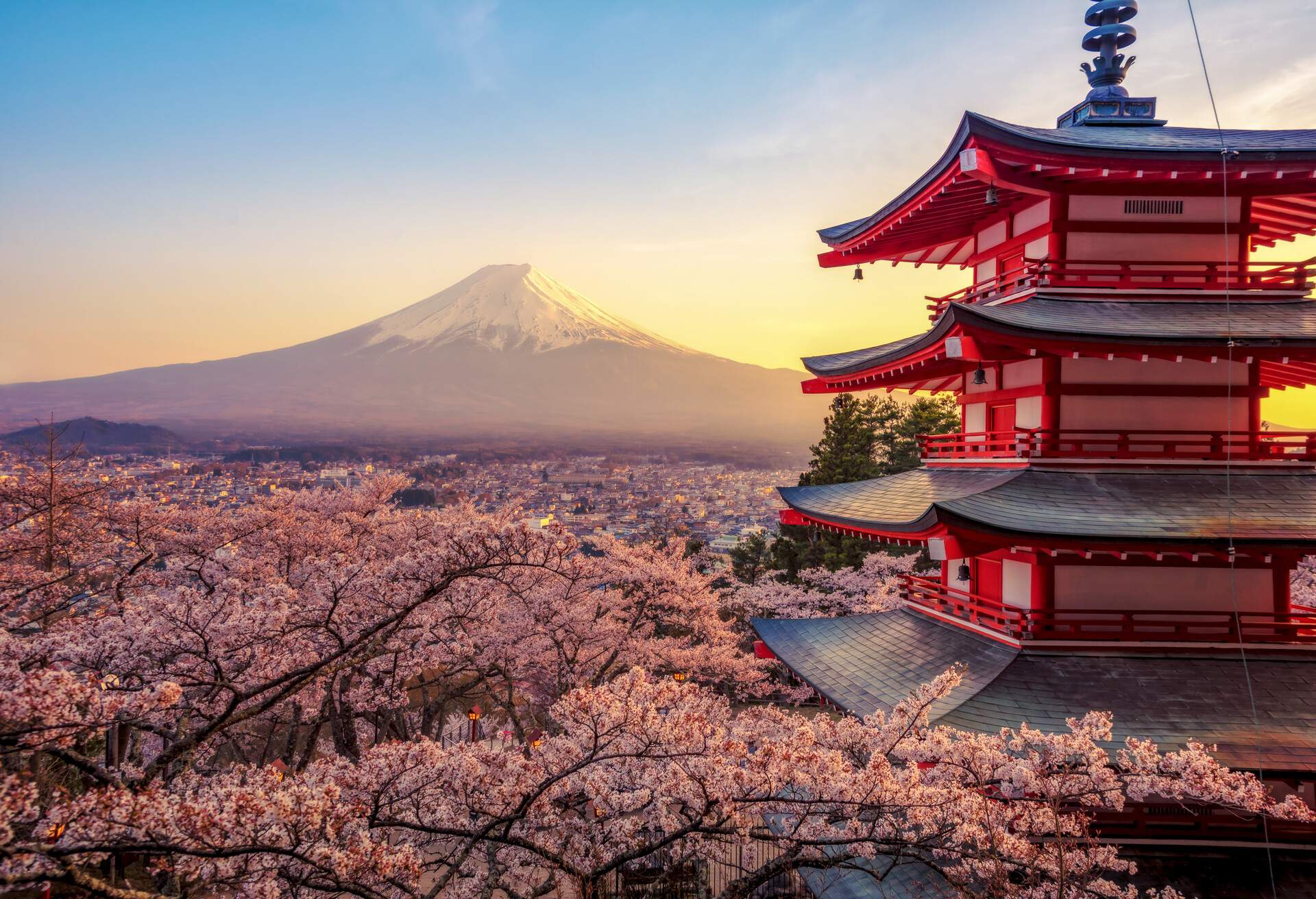
Fuji-San, Japan’s highest peak with its perfectly symmetrical cone, is probably on everyone’s must-visit list. Catching a glimpse of it from anywhere is breath-taking. Lake Kawaguchiko offers some of the best views, especially during the Sakura season (cherry blossom) or autumn, when the turning leaves completely transform the landscape. You can, of course, climb the mountain itself during the official season from July to September. Otherwise, it gets very wet or very cold. However, the views are truly spectacular at any point on the mountain, especially at dawn.
Where to stay: At the base of Mount Fuji ahead of your climb.
When to go: The Mount Fuji climbing season is from July 1 to September 14. From mid-April-start of June you can ski down Mount Fuji.
What to eat: Tempura wakasagi fish caught from the Fuji Five Lakes district is delicious.
13. Izu Peninsula – Shizuoka
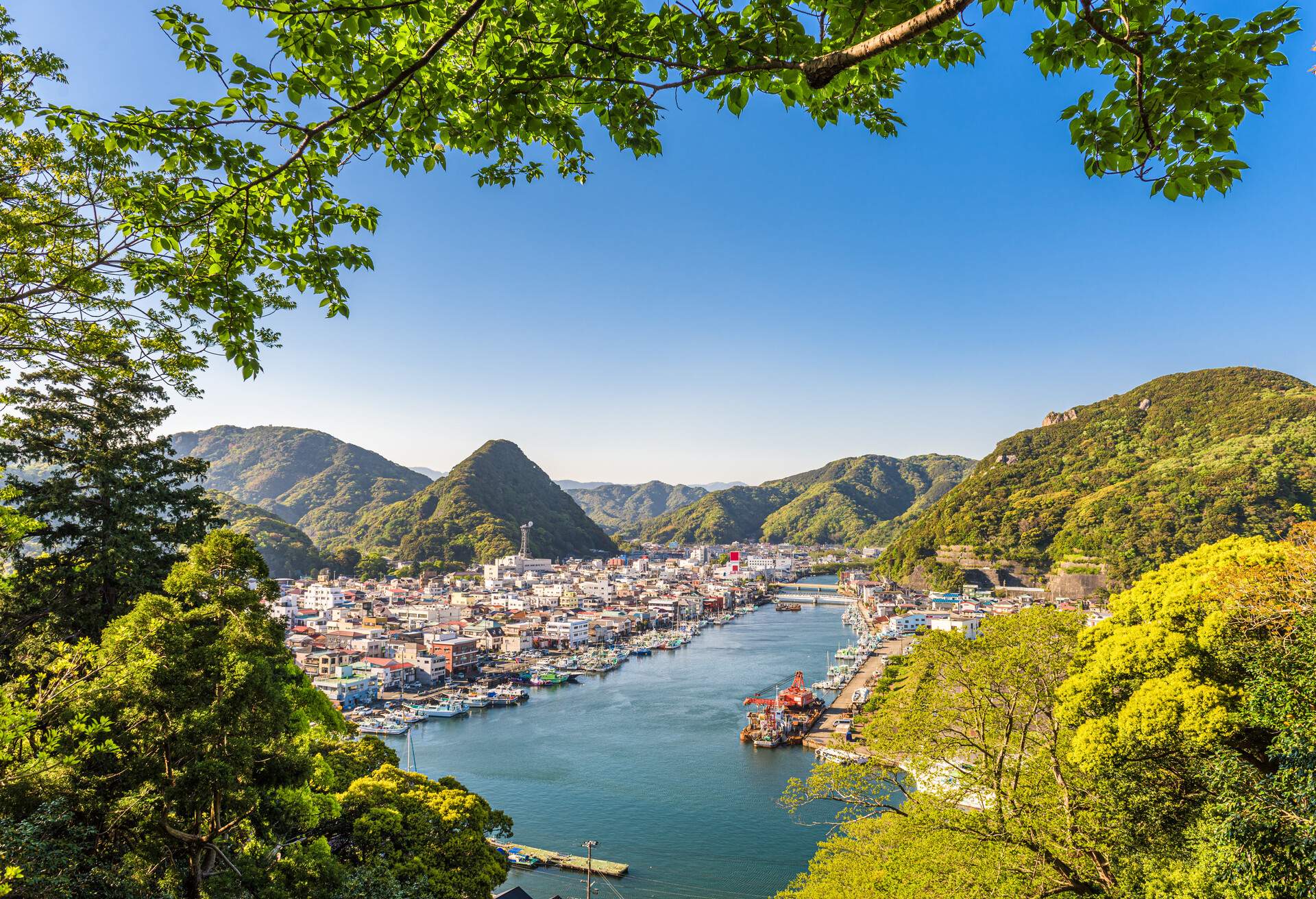
The Izu Peninsula is on the Pacific Coast of Japan with a beautiful, rugged coastline and is famous for its hot springs with an abundance of onsens and white sand beaches. The beaches on the west coast are generally quieter in the summer than those on the east coast. Weather permitting, you can also catch great views of Fuji-San at Suruga Bay.
Head to the quaint town of Shimoda, a city port that was the landing place of Western ships to Japan. Here, you will find a canal lined with old houses under willow trees now occupied by cafes, jazz bars, boutiques, and restaurants. The mood here is quite bohemian, and you won’t want to leave in a hurry. There’s a quaint cobbled walkway along the canal that leads to Ryosen-ji temple on one end and the Sawamura house on the east end of the canal.
Where to stay: Try the Shimoda View Hotel, right near the coast.
When to go: The summer for top beach action. The weather is pretty mild here compared to the rest of Japan between June and September.
What to eat: The area is famous for its world-class seafood and wasabi.
14. Okinawa island
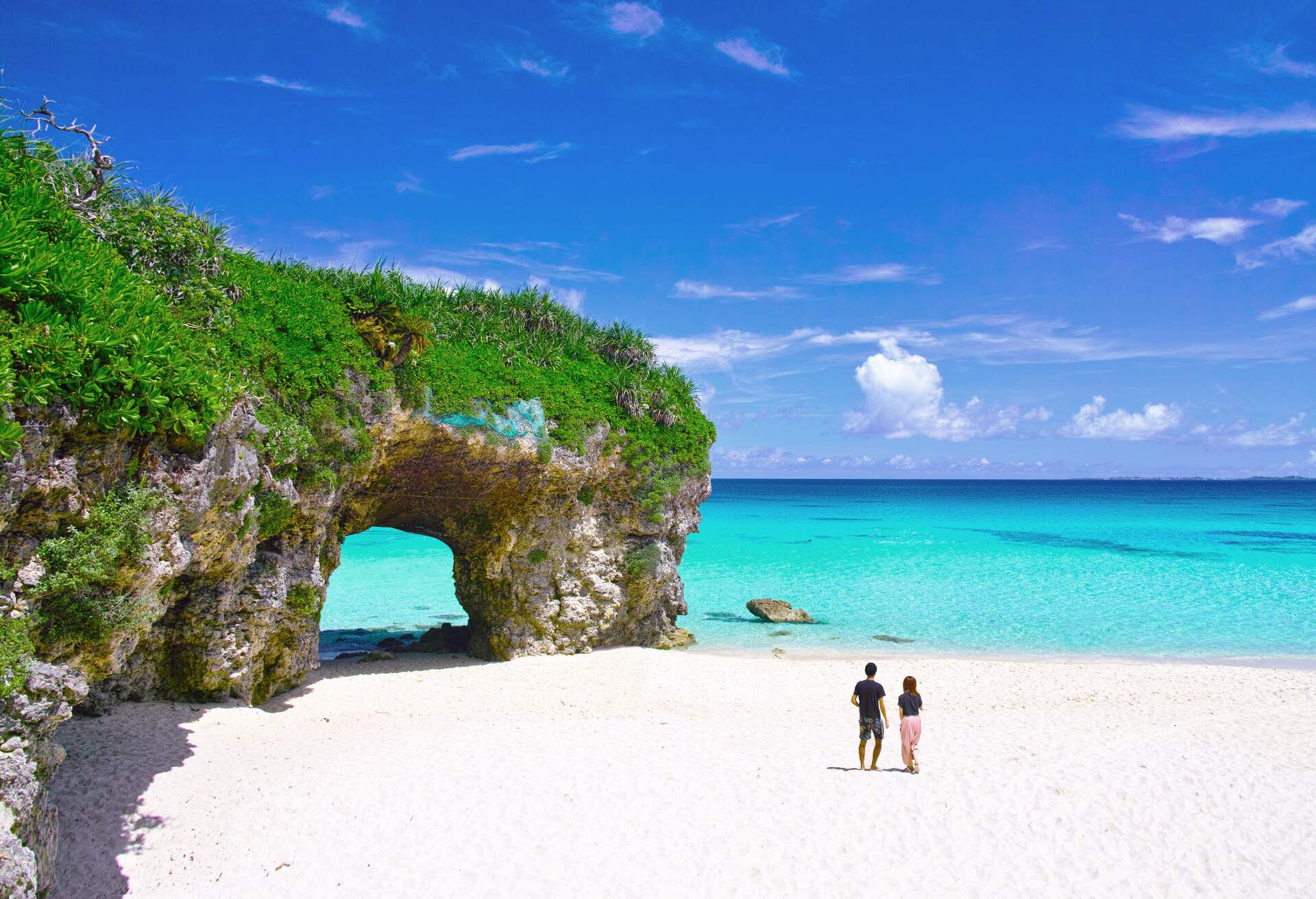
Now, for a completely different experience, visit Okinawa and enjoy its semi-tropical vibes. Many don’t even realise these southern islands exist. The archipelago forms an arc between Kyusu and Taiwan and was once a kingdom until Japan annexed it in the 19th century.
As a result, the culture here is entirely different to the rest of Japan, including its architecture and spicier food. In addition, it has some of the best beaches in Japan, often bordered by palm trees and turquoise waters, which are perfect for snorkelling and scuba diving. You can also trek into the jungle if you fancy it.
Where to stay: Nago city – Hotel Yugaf Inn has direct access to the beach.
When to go: Spring or Autumn. Avoid the rainy season from June – August.
What to eat: The food is generally spicier here than mainland Japan – try the Okinawa Soba noodles.
14a. Ishigaki Island – Okinawa
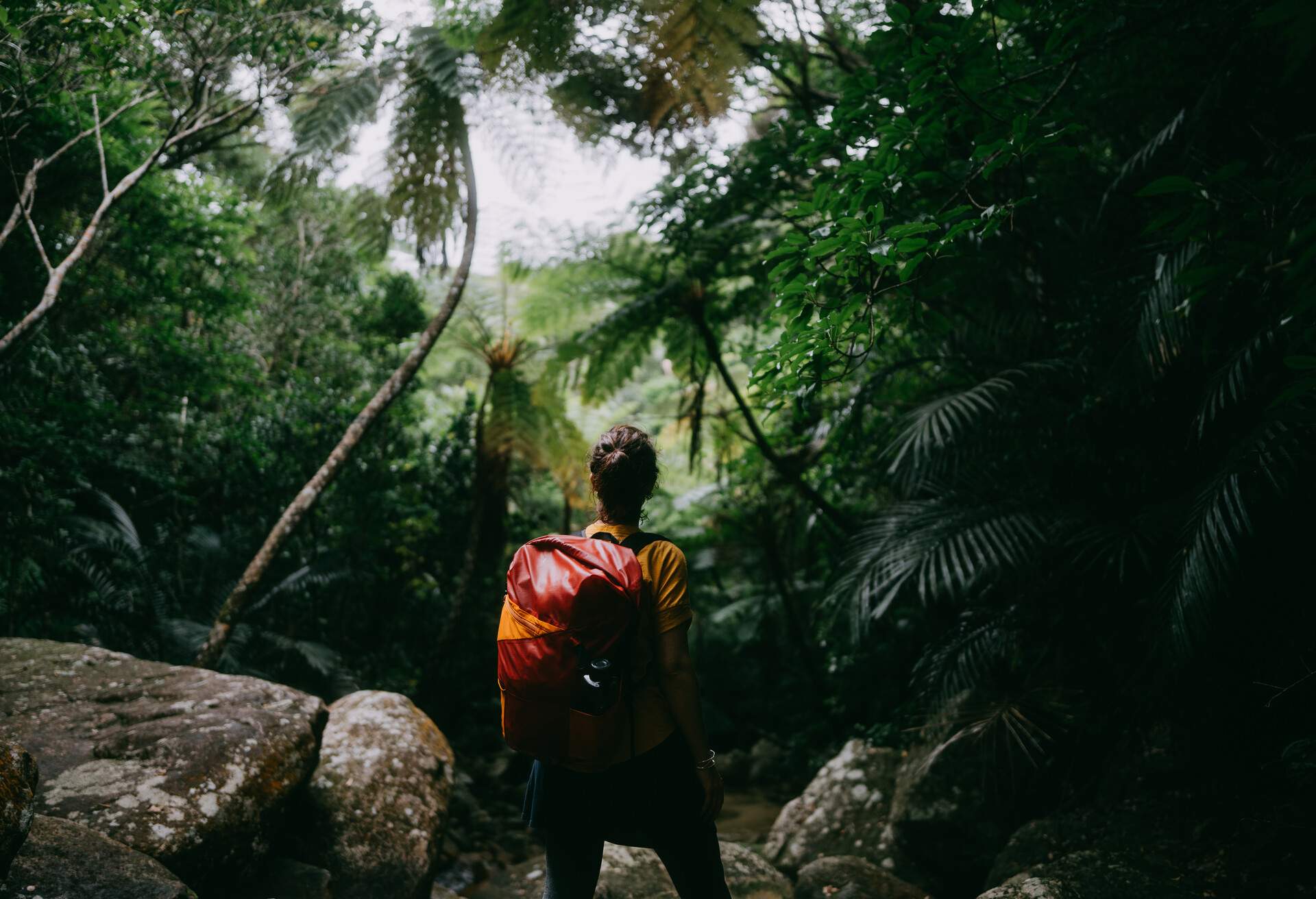
Ishigaki Island is one of the largest islands of Japan’s Okinawa archipelago. One of the Yaeyama Islands, it is the remotest place in Japan, and only 75 miles away from Taiwan.
The island has near-white fine sand beaches, luxurious beach resorts, and clear blue waters where you can scuba dive and swim with hammerhead sharks. One of the experiences to have here is an eco-excursion to the mangrove forests of Iriomate Island.
15. The Kerama Islands
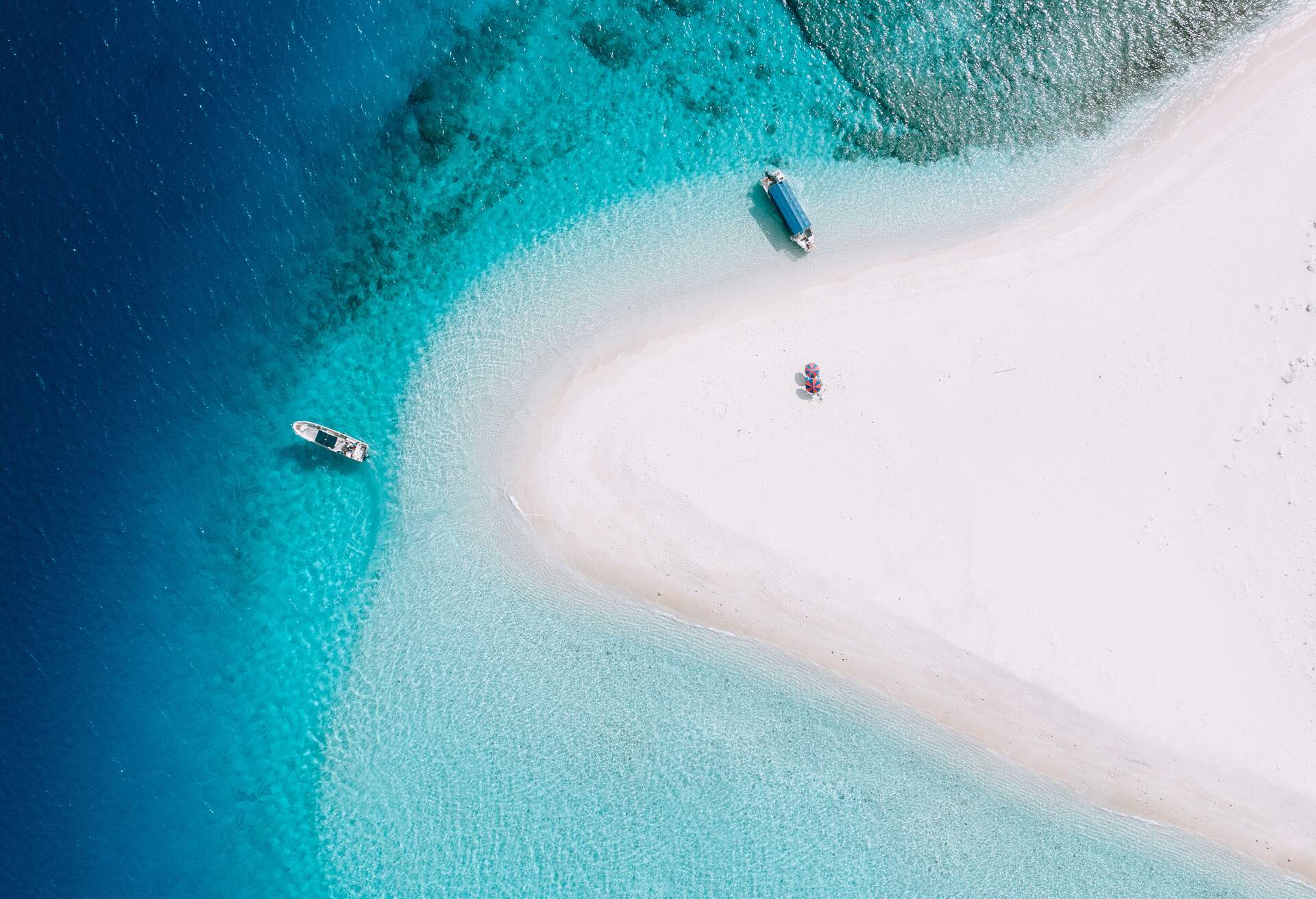
The Kerama Islands consist of 36 isles, with only four of them inhabited. The islands offer excellent hiking trails, whale watching, snorkelling, diving, or just lolling around on the beach. The hunchback Whales arrive in the waters around Kerama from around January to March, so it is the best time to visit if you want to catch a glimpse of these magnificent animals.
Where to stay: Try the Kerama beach hotel.
When to go: January – March for whale watching.
What to eat: Gōyā chanpurū, a stir fry using the gōyā fruit is unique to the islands. Also try sea-snake soup (irabu) if you’re feeling adventurous.
15a. Tokashiki Island and Zamani Islands
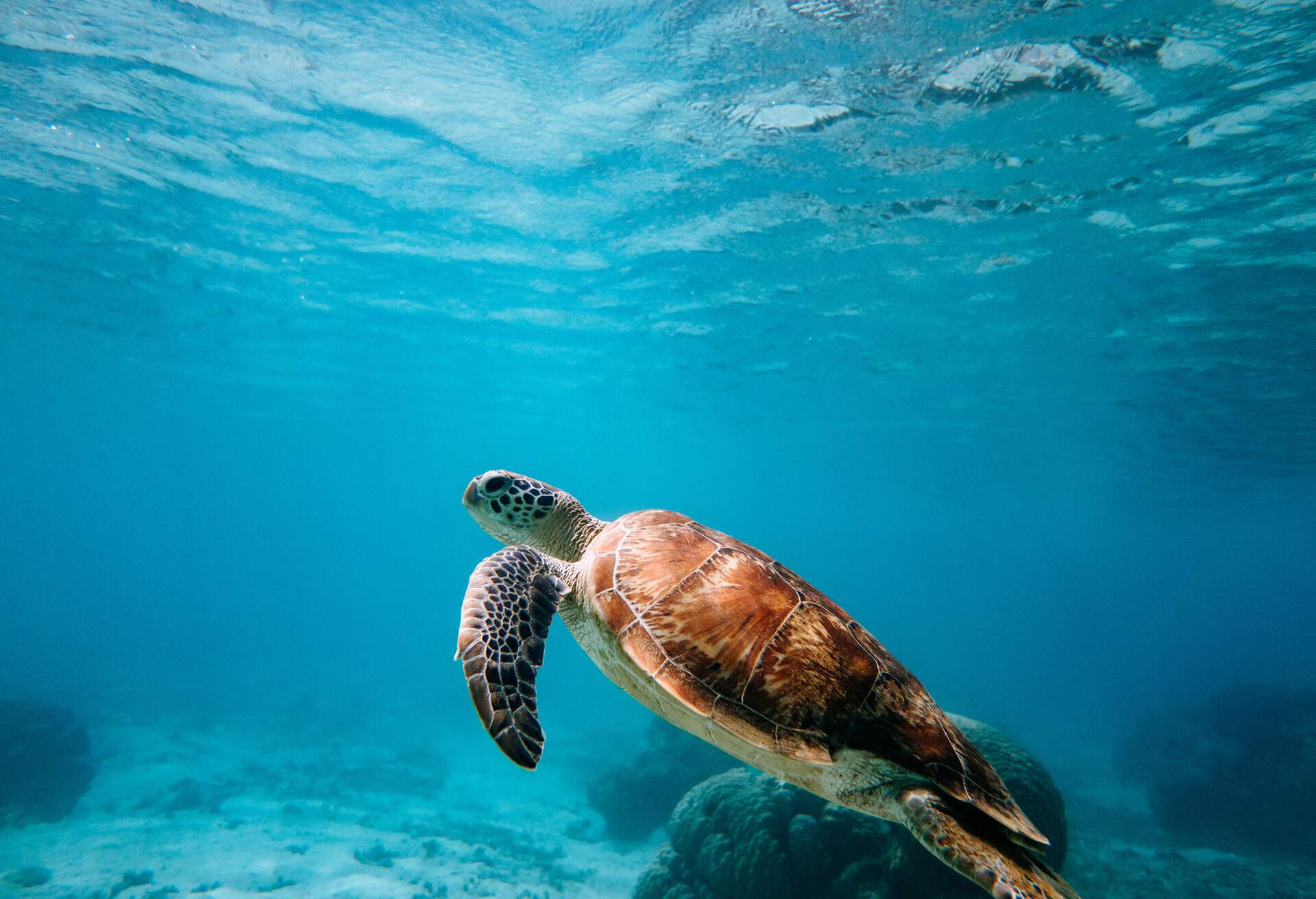
The largest of the Kerama isles is the Tokashiki island with two village ports, Tokashiki village on the northeast coast and Aharen on the southwest coast. There are many beautiful beaches on the islands, but this is where you will find the best snorkelling with sightings of the Takashi Sea turtle and an abundance of marine life.
You can find the best beaches on Zamani Islands. The Ama beach, with its shallow waters, is perfect for family holidays but means you have to swim further if you want to see any coral or sea life. Furuzamani beach, in the meantime, offers everything from swimming to diving and is great if you want to get up and close to tropical fish and coral.
If you enjoyed this article, you might like:
